Shirokane Sankocho Tributary(白金三光町支流)July 12, 2025
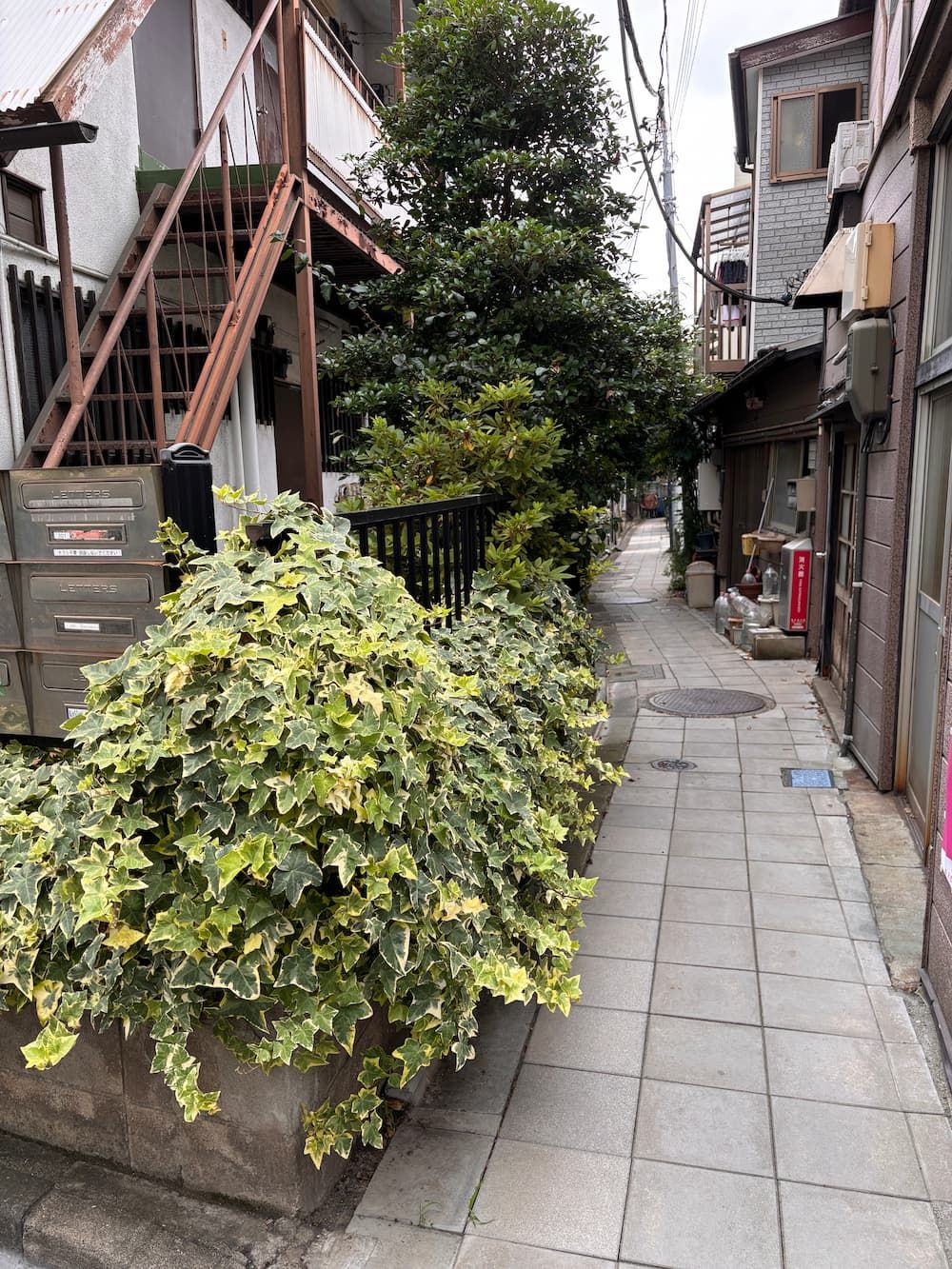
From the window of a small factory, I could hear the sound of machines running, mixed with the sound of a radio.
Where I Walked
Shirokane’s Striking Contrast
I explored the area in two parts. On July 12, I mainly followed the traces of the old river. On my second visit, on August 15, I walked around the former water source. In Shirokane, the slopes mark a clear divide — refined hillside homes above, and a lowland that still holds on to the charm of the Showa era.
There used to be a pond serving as a water source in the depression between the Institute of Medical Science at the University of Tokyo and the Minato City Local History Museum.
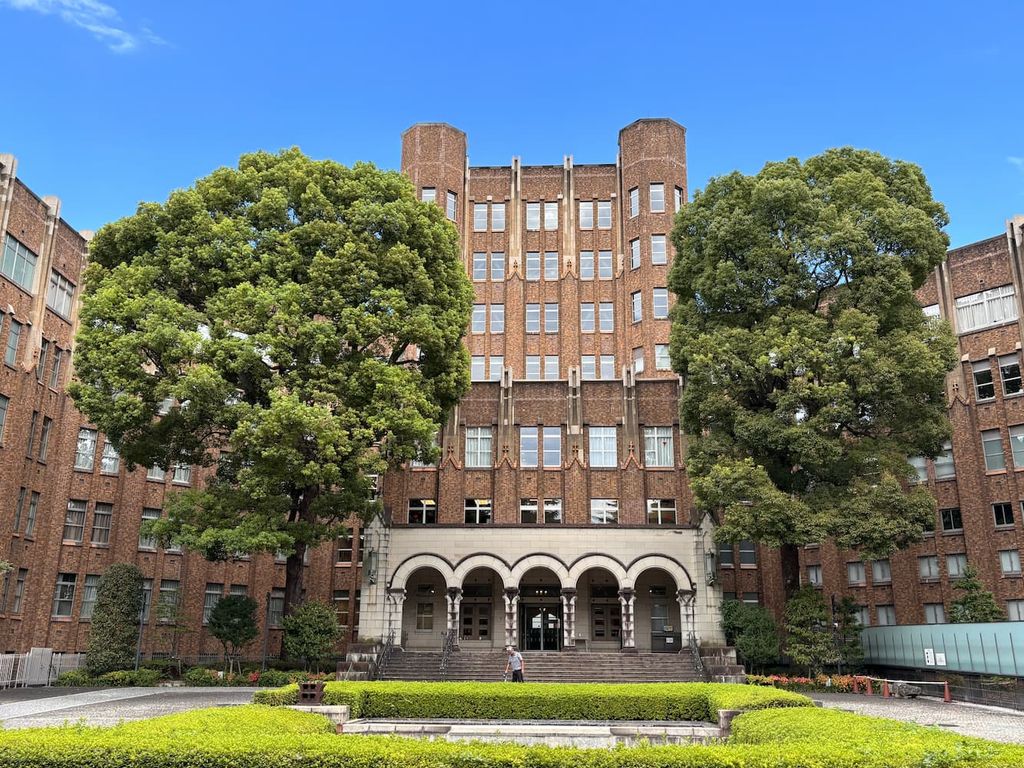
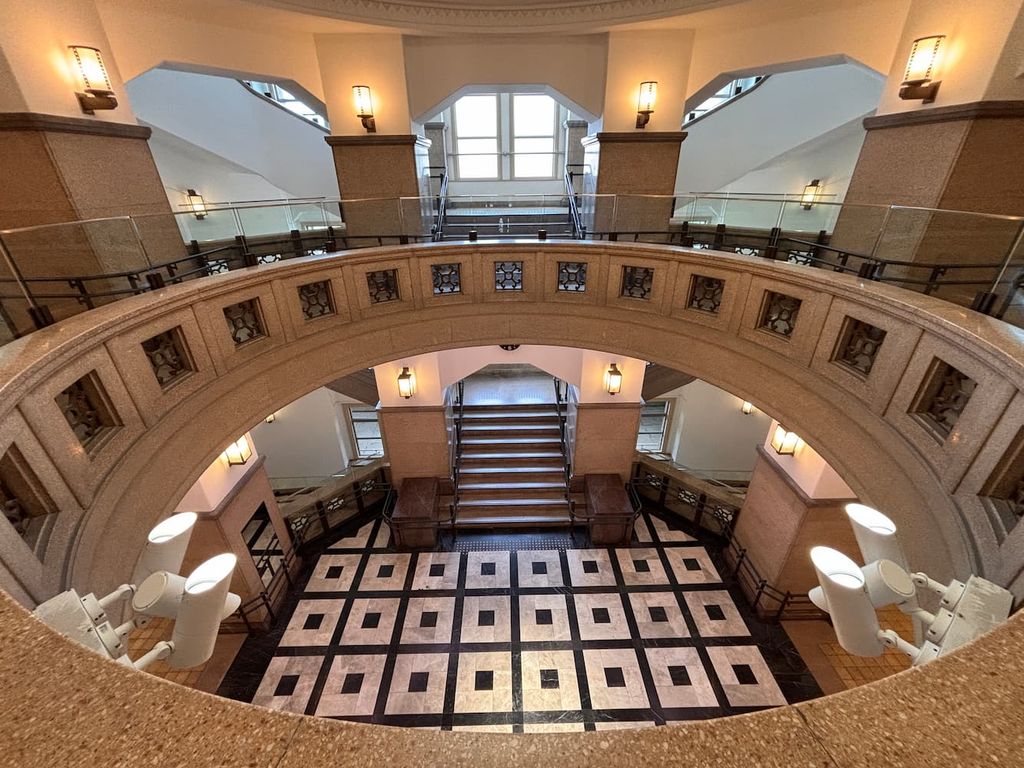
Originally built in 1938 as Japan’s National Institute of Public Health, this striking Art Deco building now houses the Minato City Local History Museum, welcoming visitors to explore the area’s rich past.
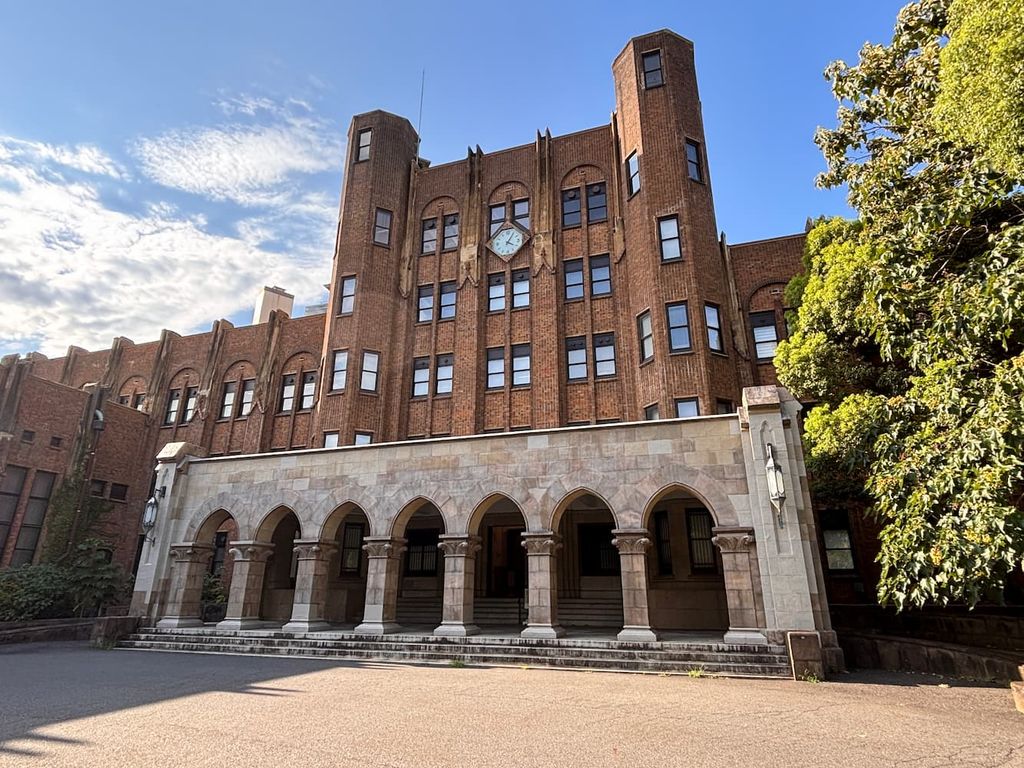
Right beside the Former Institute of Public Health stands the University of Tokyo Institute of Medical Science Hospital — designed by the same architect, Yoshikazu Uchida.
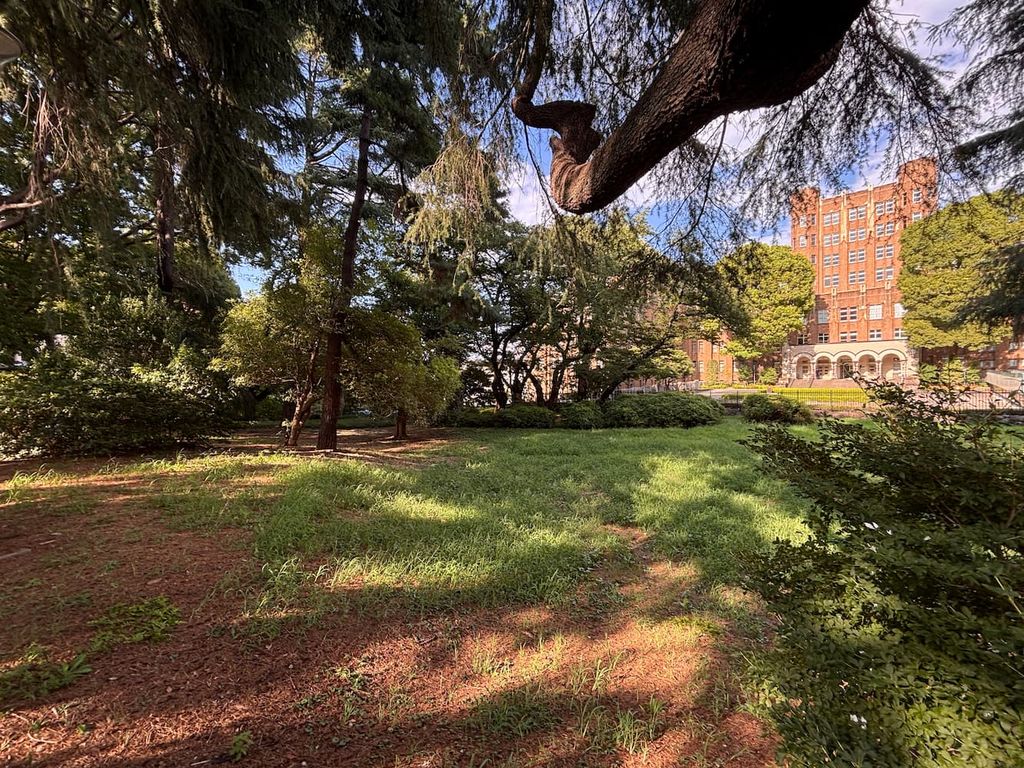
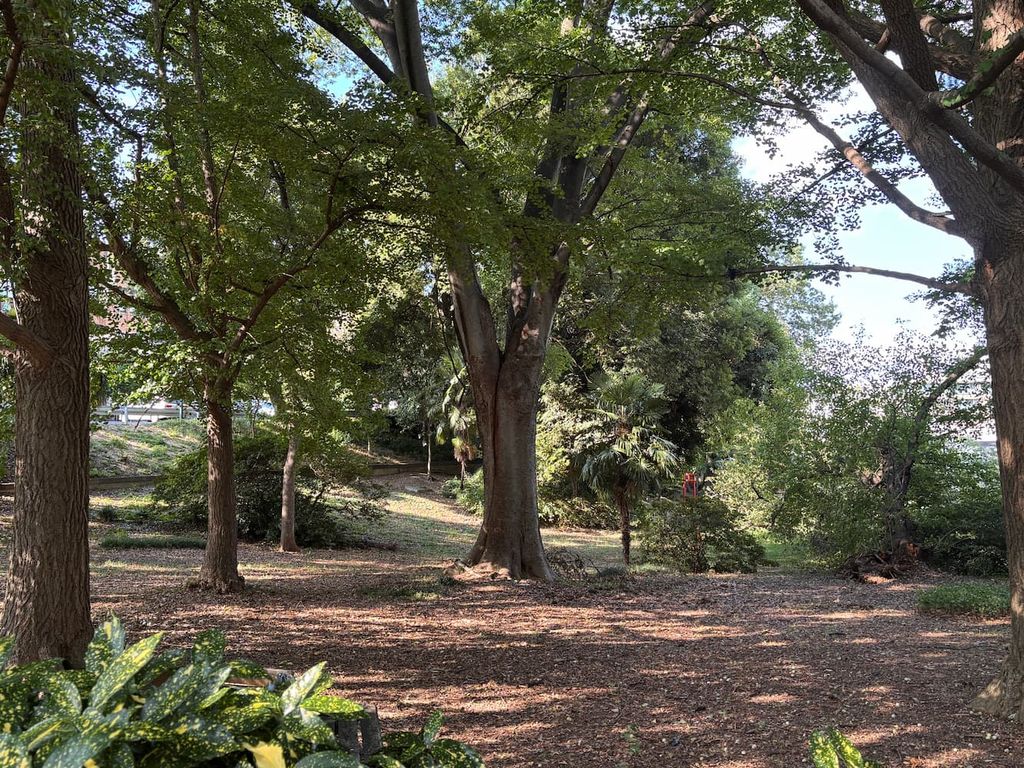
Between the two buildings, a grove of trees marks a small depression where a pond once served as a water source.
Though I couldn’t capture it on camera, I was delighted to see a few swallowtail butterflies weaving gracefully through the trees.
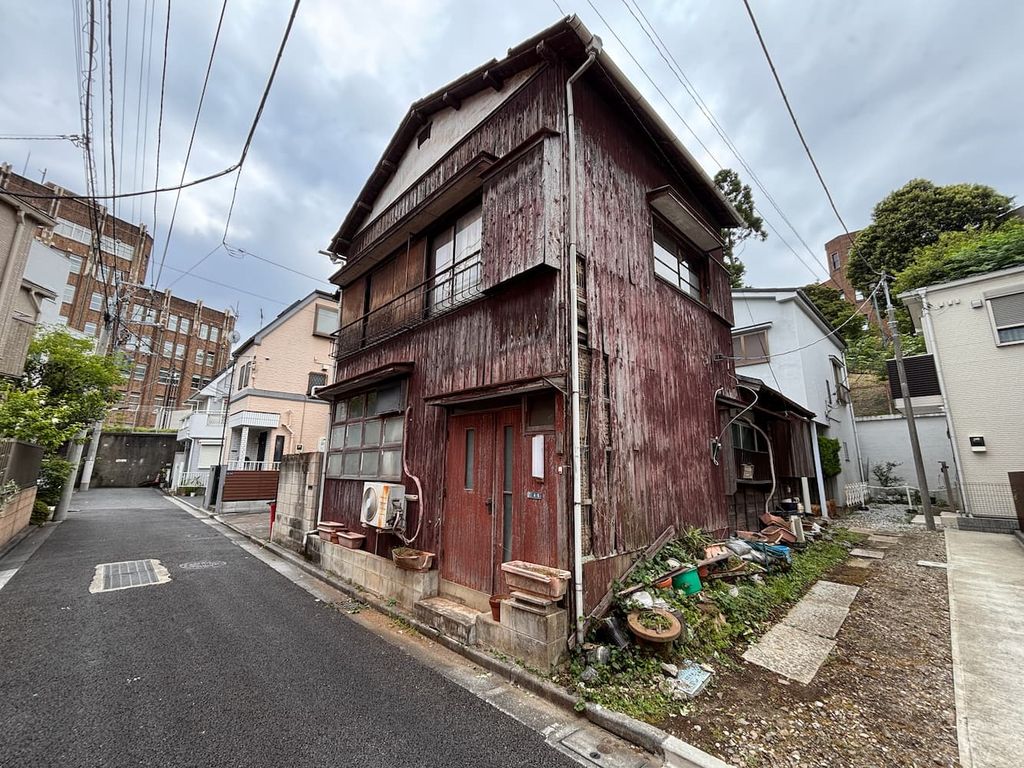
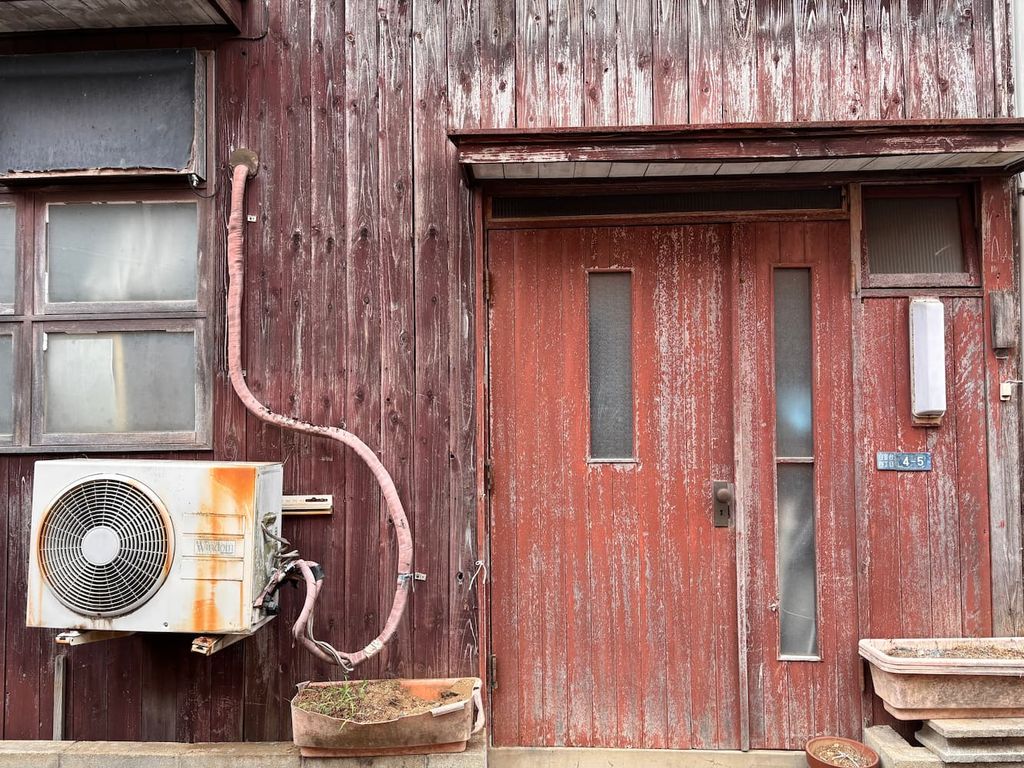
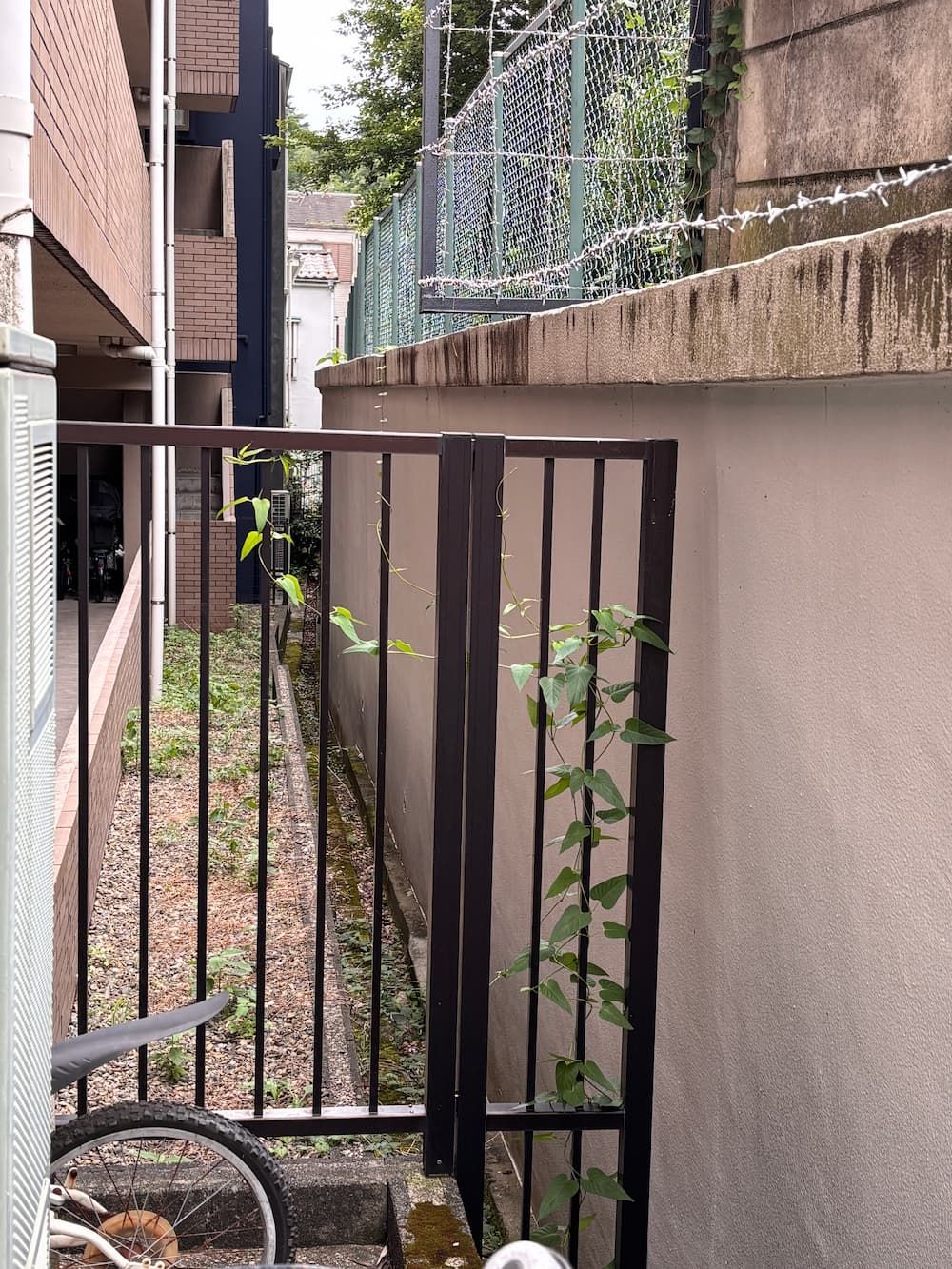
On the right is the hill where the hospital stands. Just below it runs a water channel.
I’m not sure if this is actually a remnant of the river.
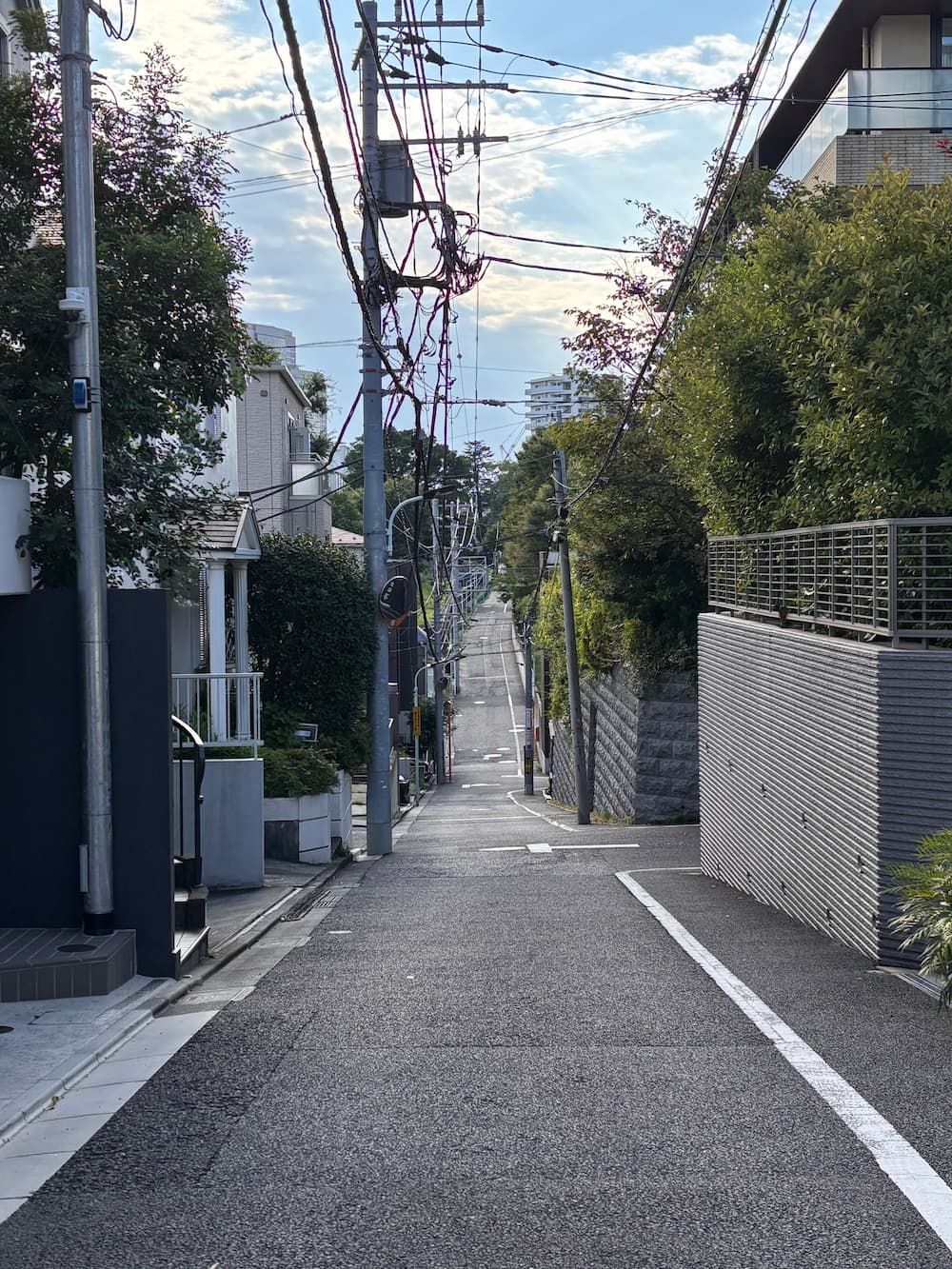
Looking out over the valley where a river once flowed — the hospital with its spring lies to the left, and to the right, the Sacred Heart School where the river once ran through.
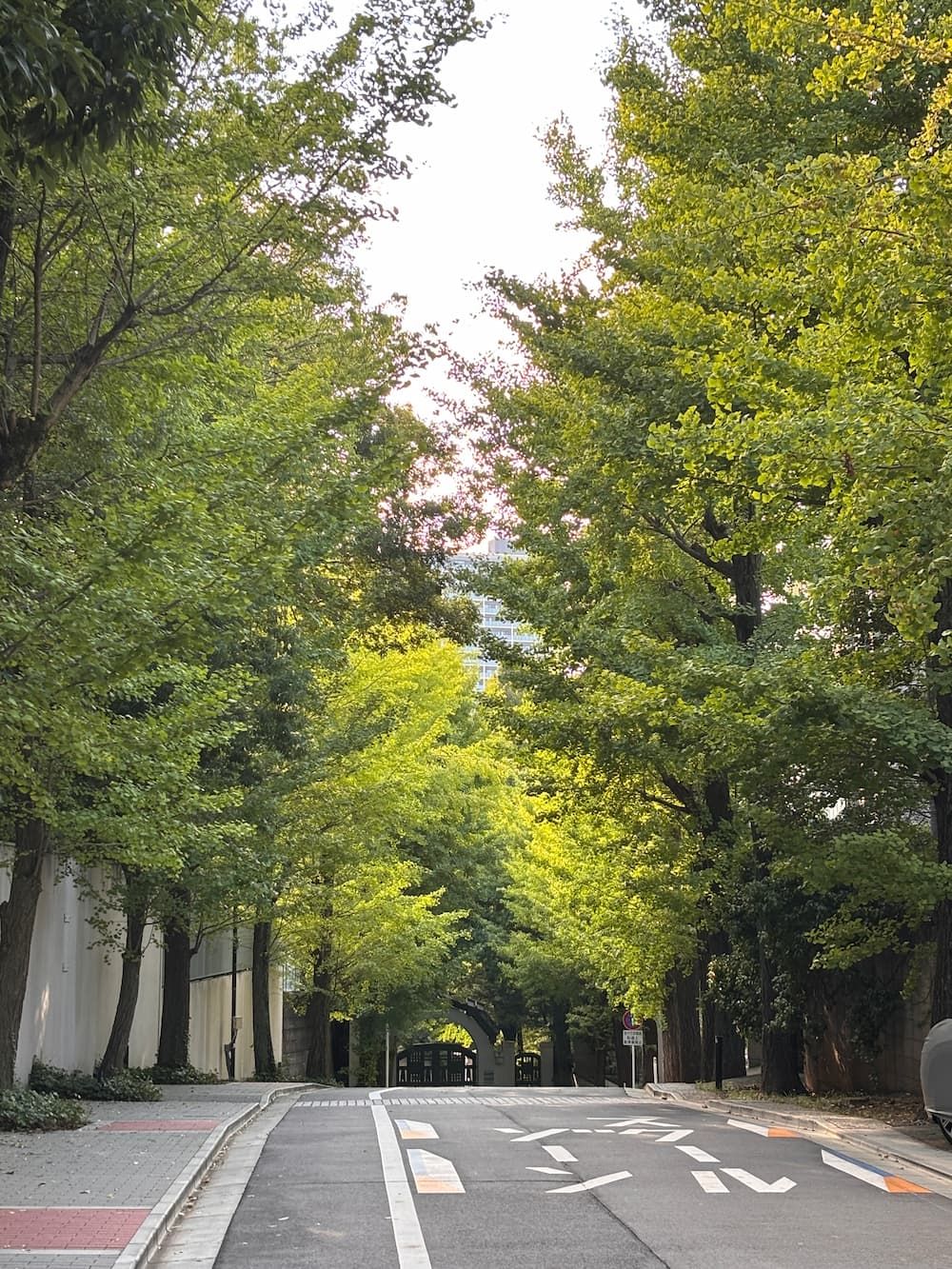
Gazing down into the valley, you come upon the main gate of the Sacred Heart School nestled at the bottom.
The ginkgo trees here must turn into a stunning golden avenue in autumn.
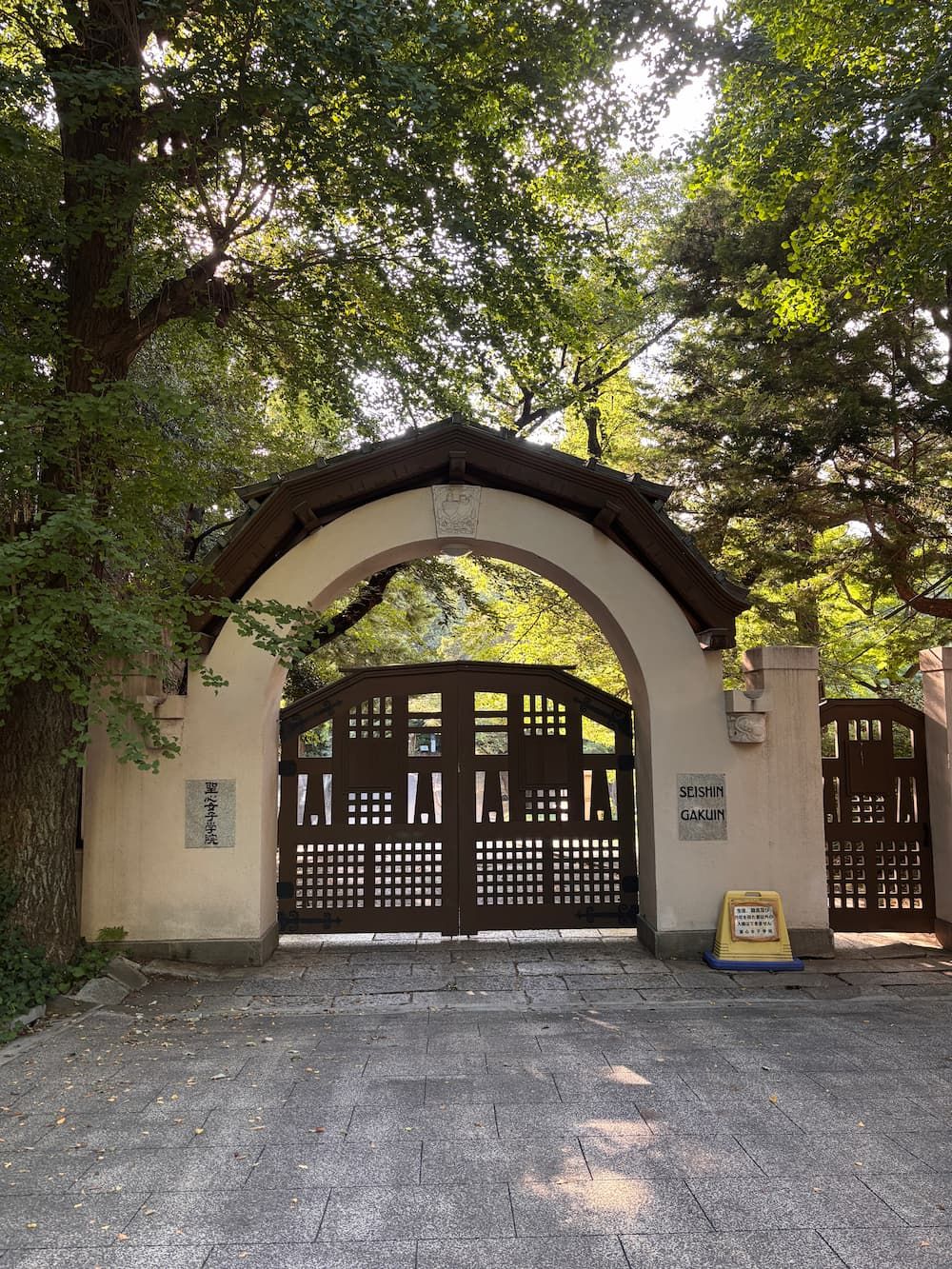
At the foot of the valley stands the main gate, not far from where the river is thought to have once run.
Interestingly, this gate was designed by the same architect responsible for the Hiroshima Atomic Bomb Dome.
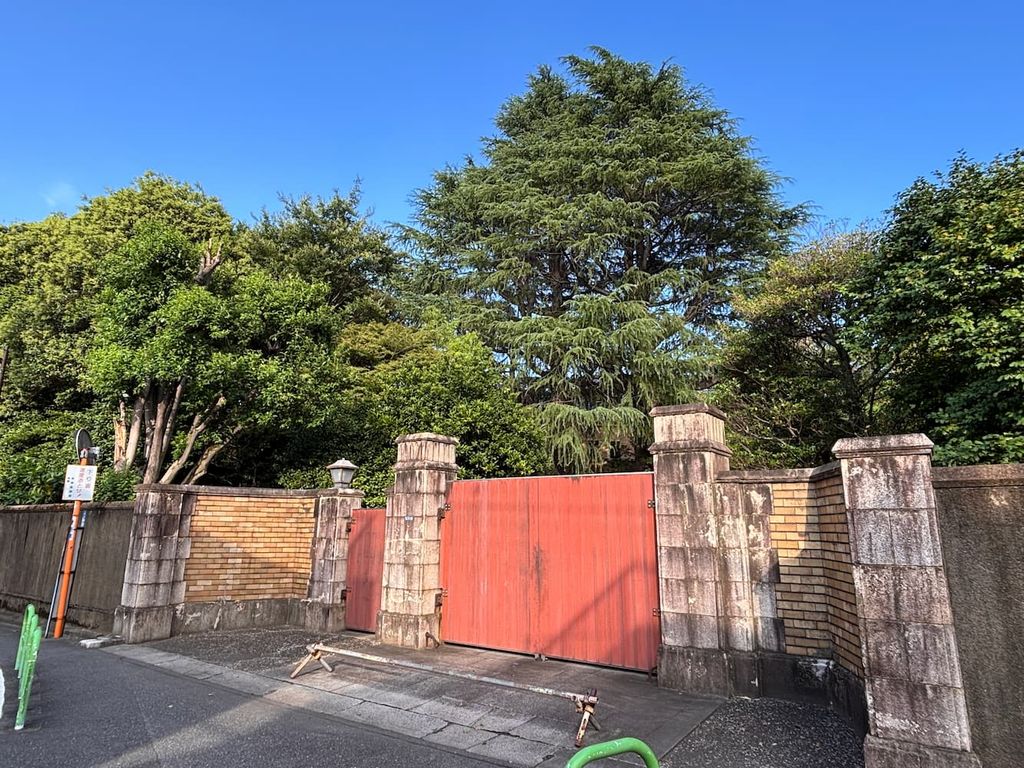
The Hattori House in Shirokane is a stately Western-style residence built in the early 20th century. It was once the home of Kintarō Hattori, the founder of Seiko, Japan’s iconic watch brand. Its graceful design and well-preserved interiors offer a glimpse into the refined lifestyle of the era.
Since the property has been bought by a condominium developer, this landscape may not remain forever.
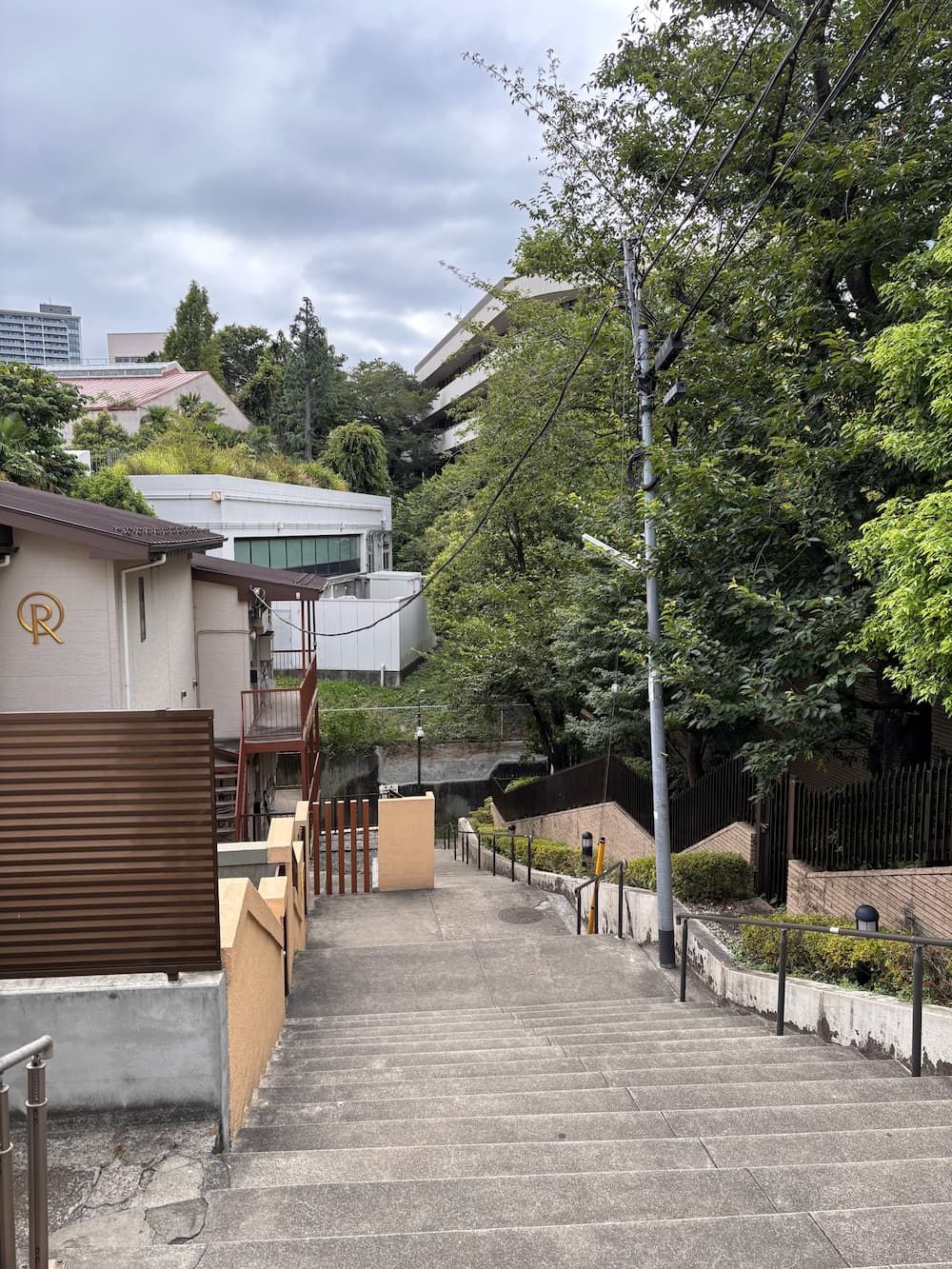
Going down these steps, you’ll reach a path that traces the course of the hidden waterway.
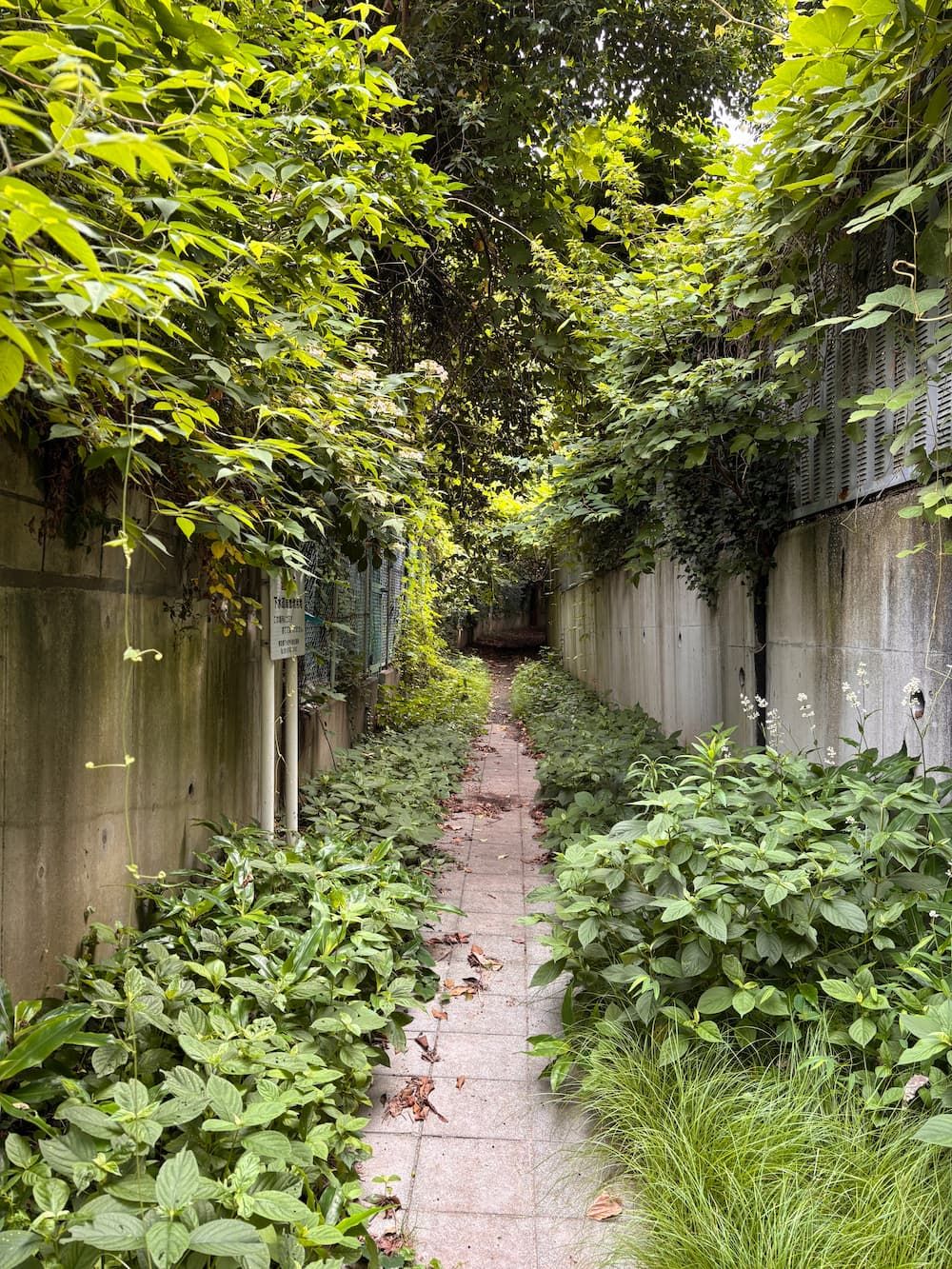
Gazing upstream, the river disappears into a lush canopy of trees, flowing quietly through the greenery.
On the right is the campus of the Sacred Heart School.
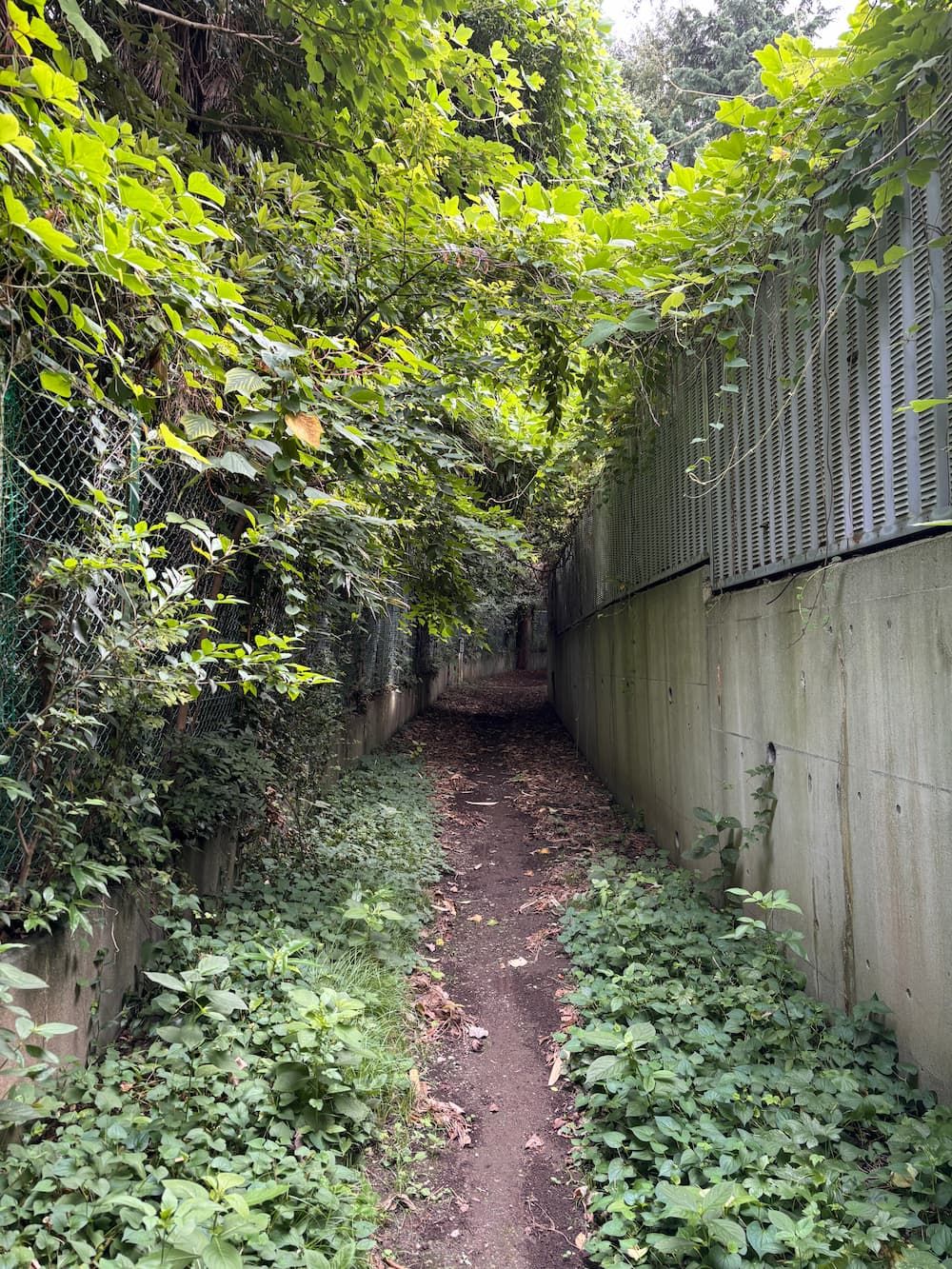
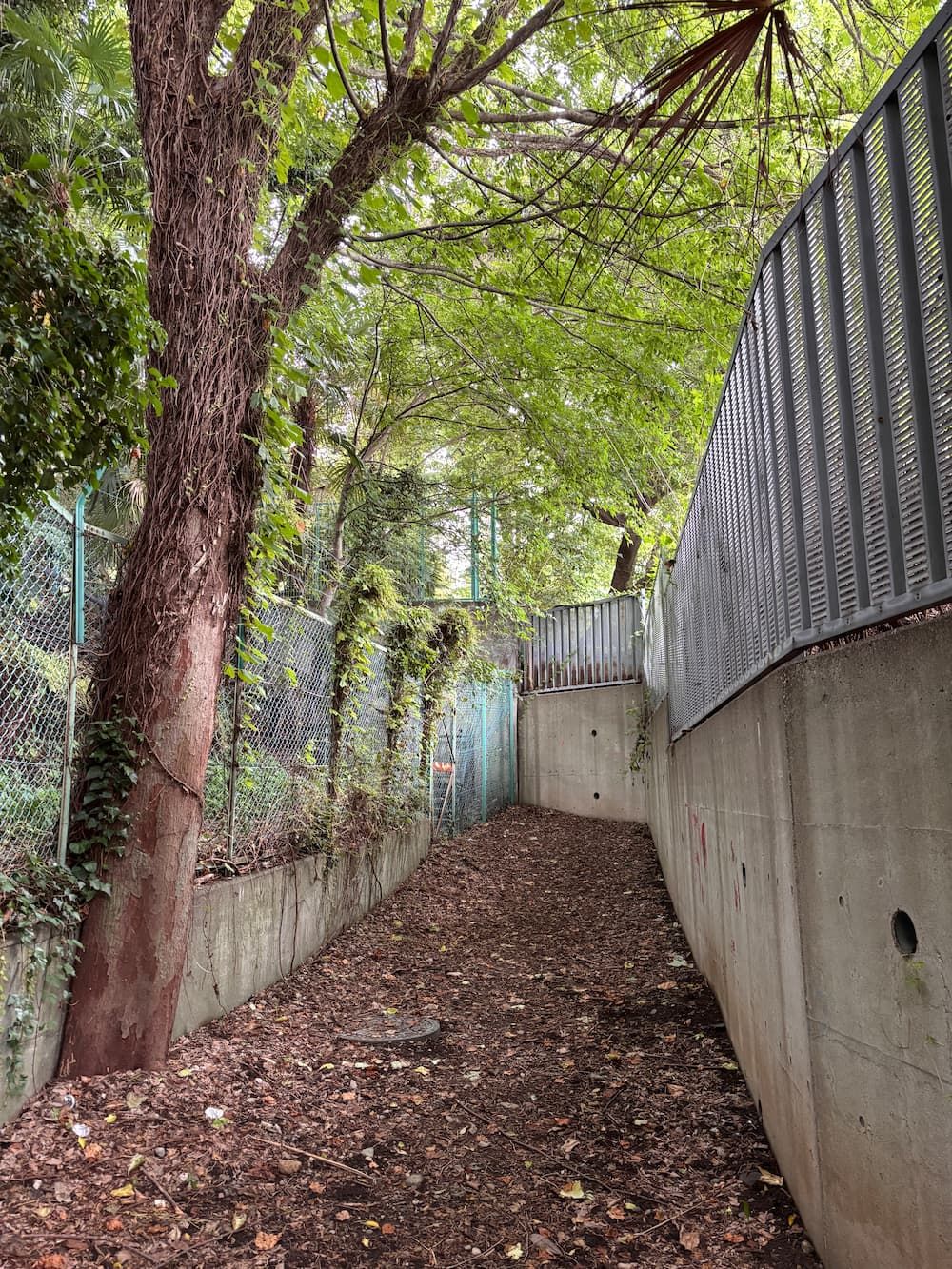
As you go further, the path turns into an unpaved trail and finally ends in a quiet dead end.
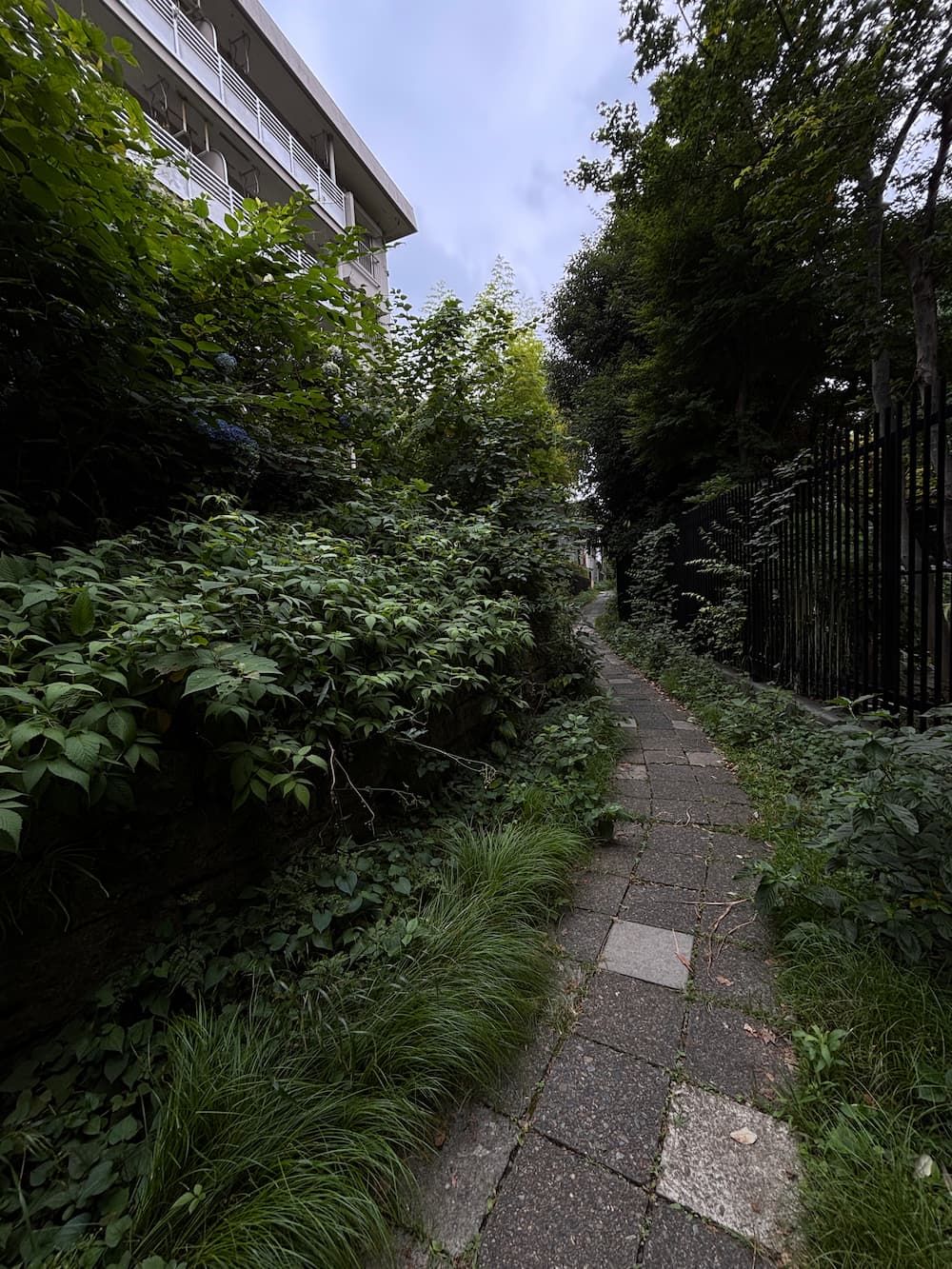
I make my way downstream, following the trace of the water.
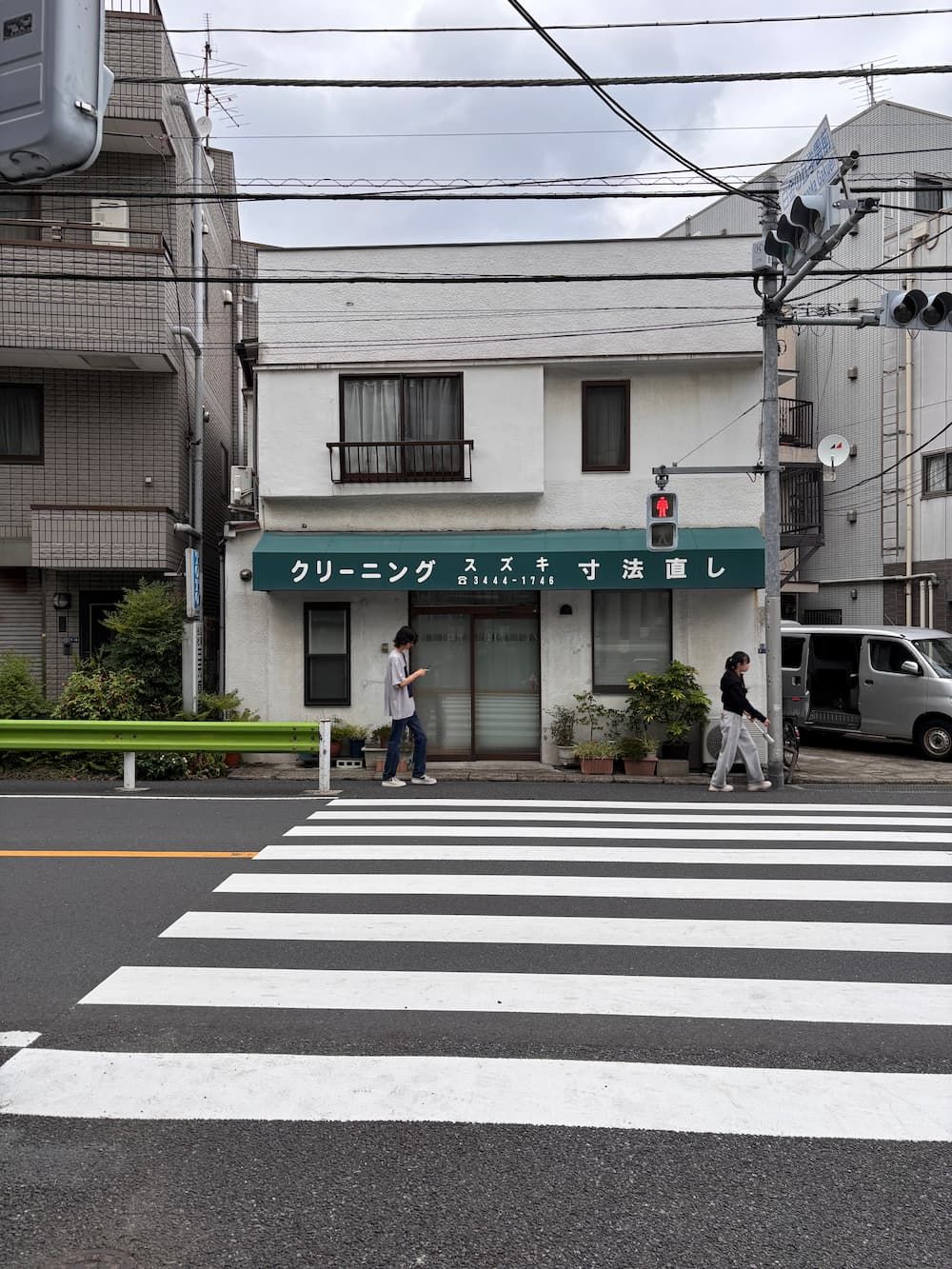
Skirting the right side of a dry cleaner’s, the river continues on.
Dry cleaning shops are one of those familiar scenes often found near covered waterways.
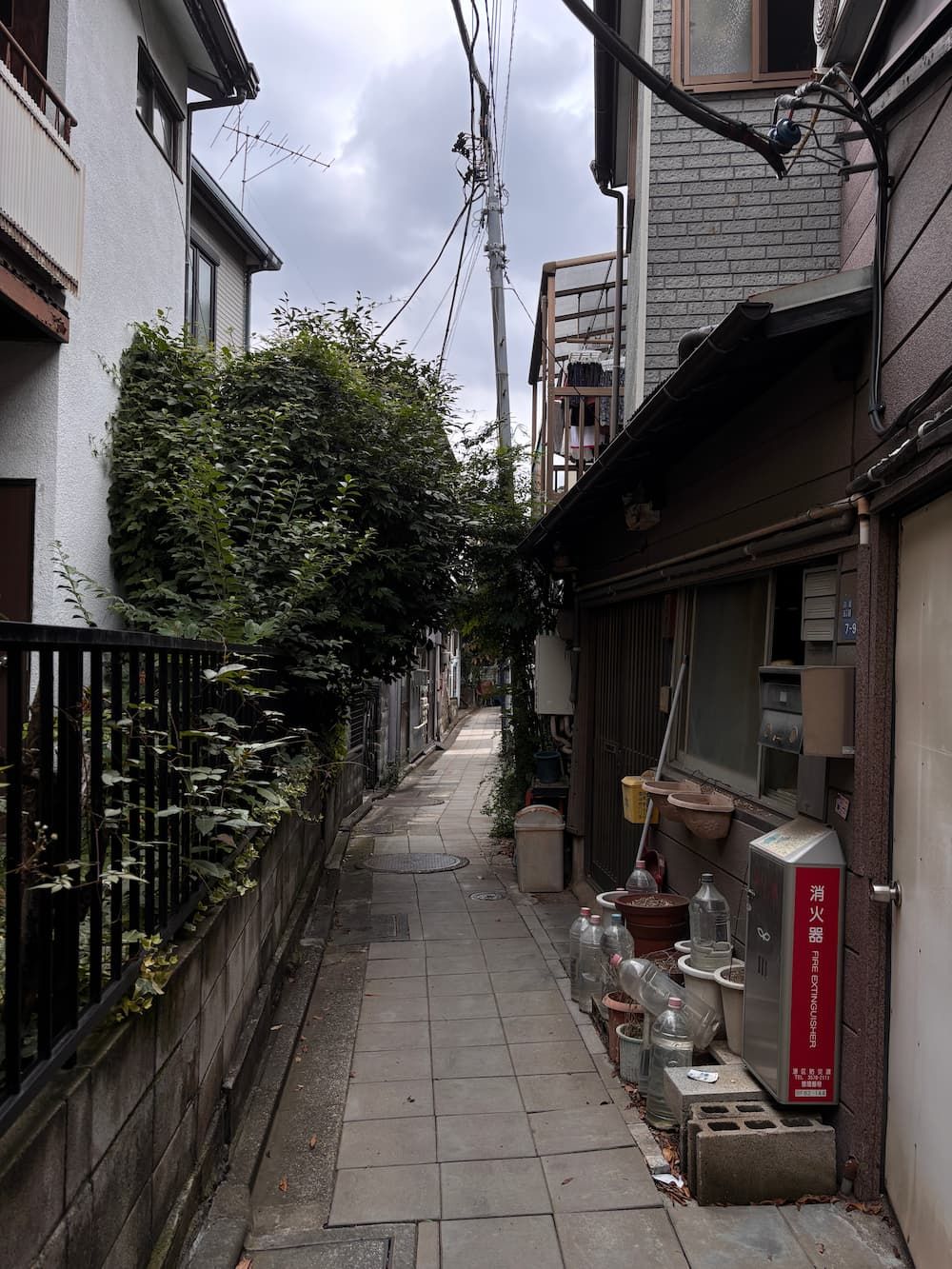
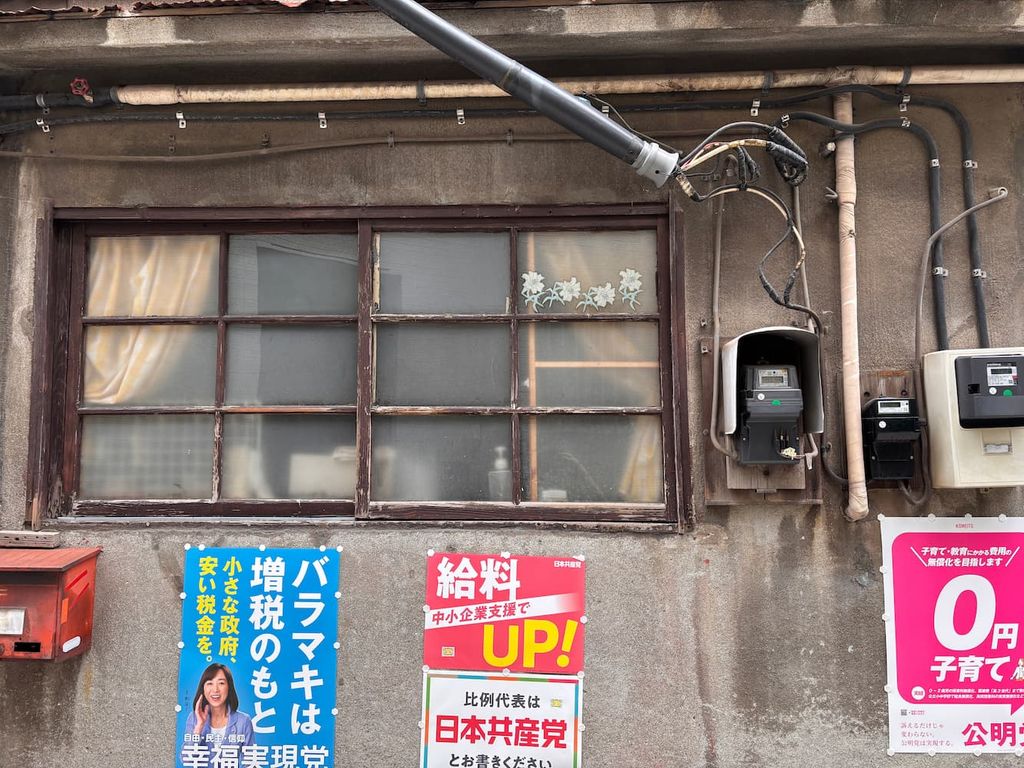
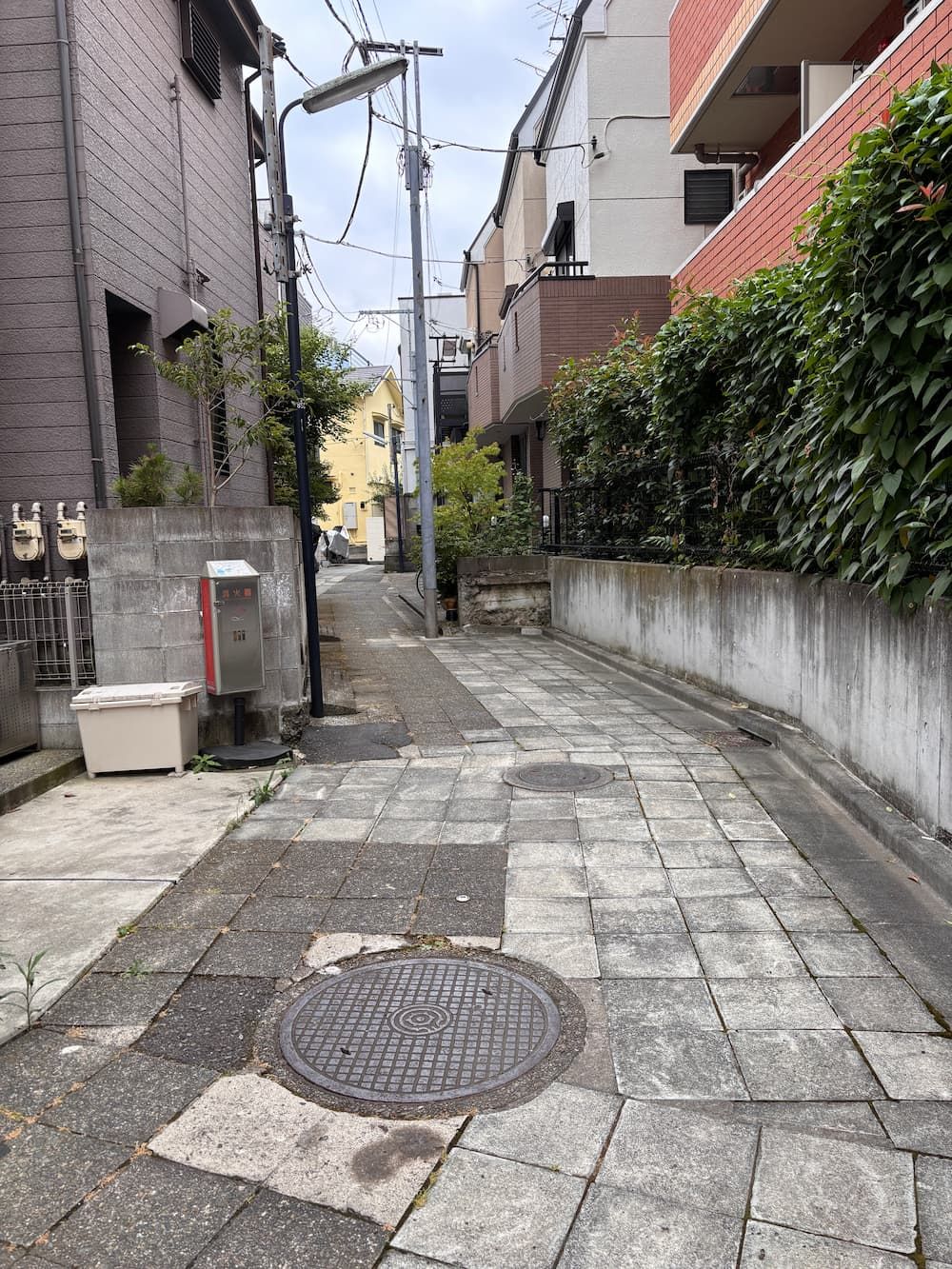
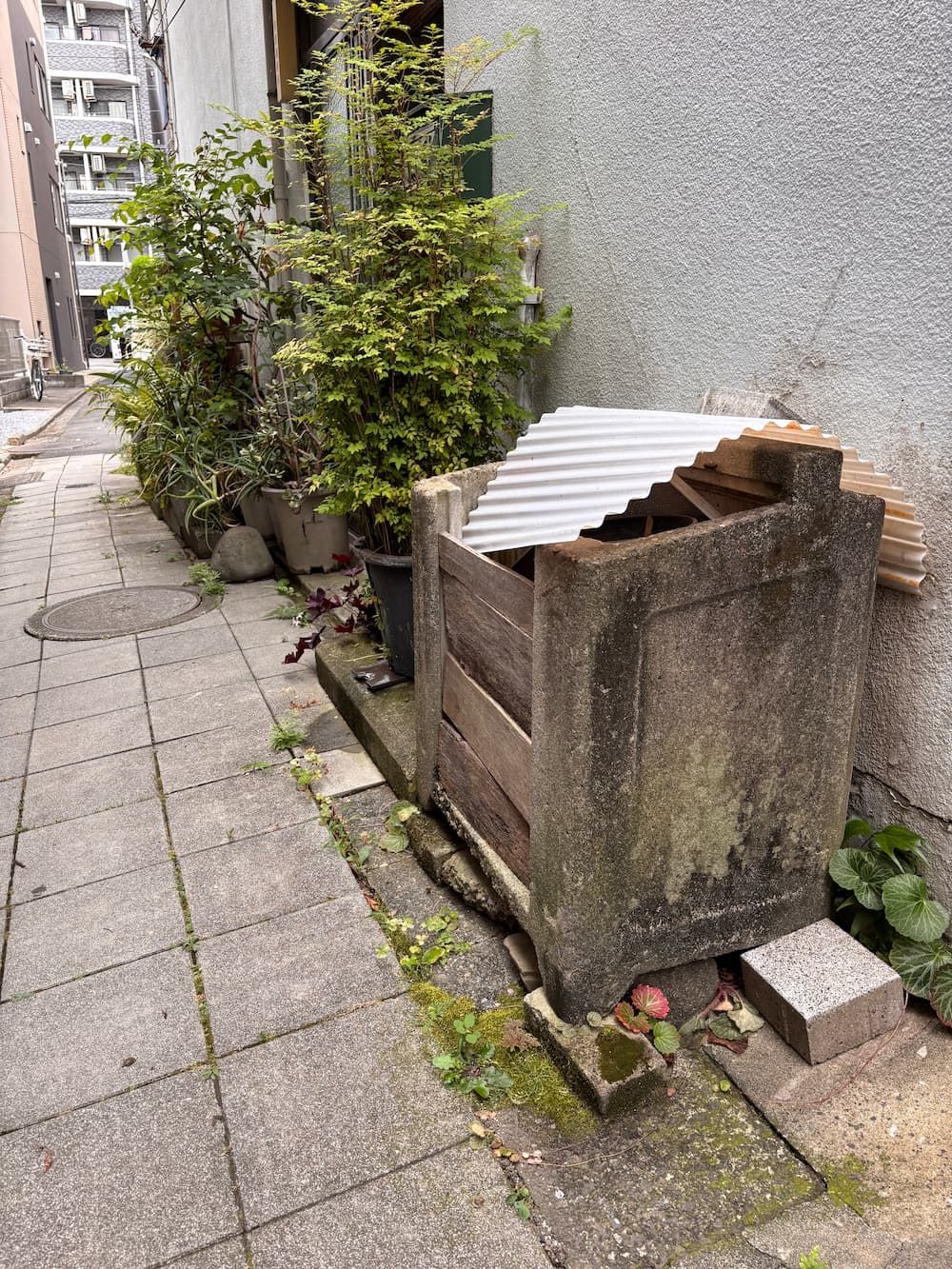
I found an old concrete trash bin, a relic from the past. During the 1964 Tokyo Olympics, a campaign against these bins — thought to spoil the city’s beauty — resulted in the rise of plastic buckets with lids that soon took their place.
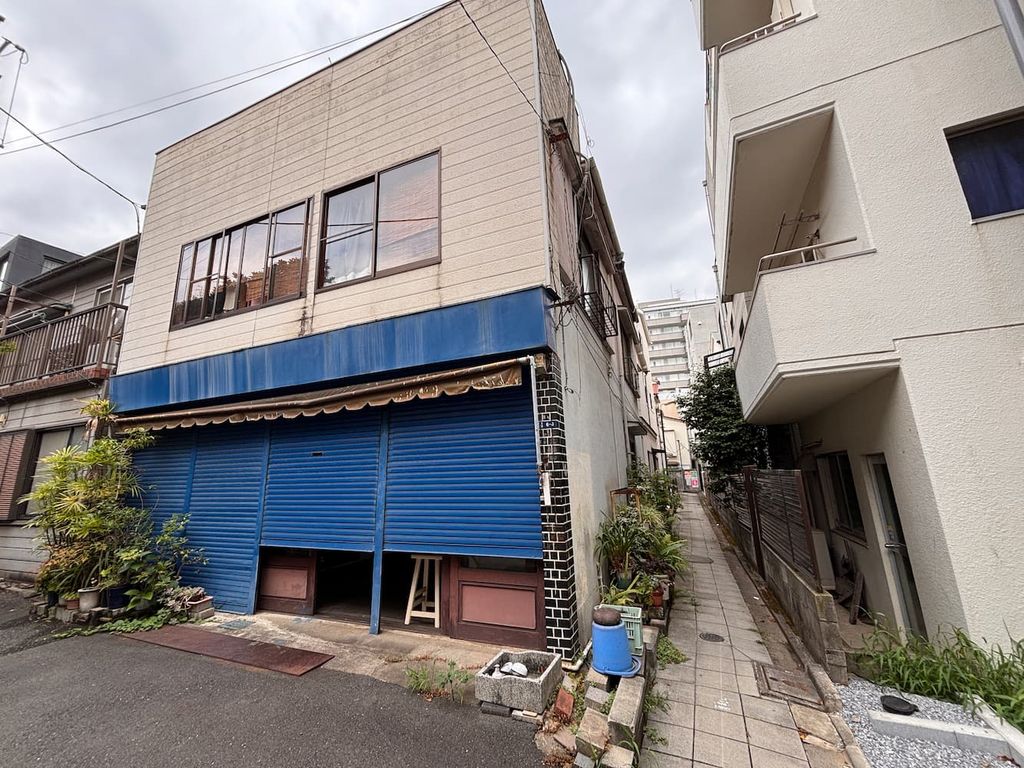
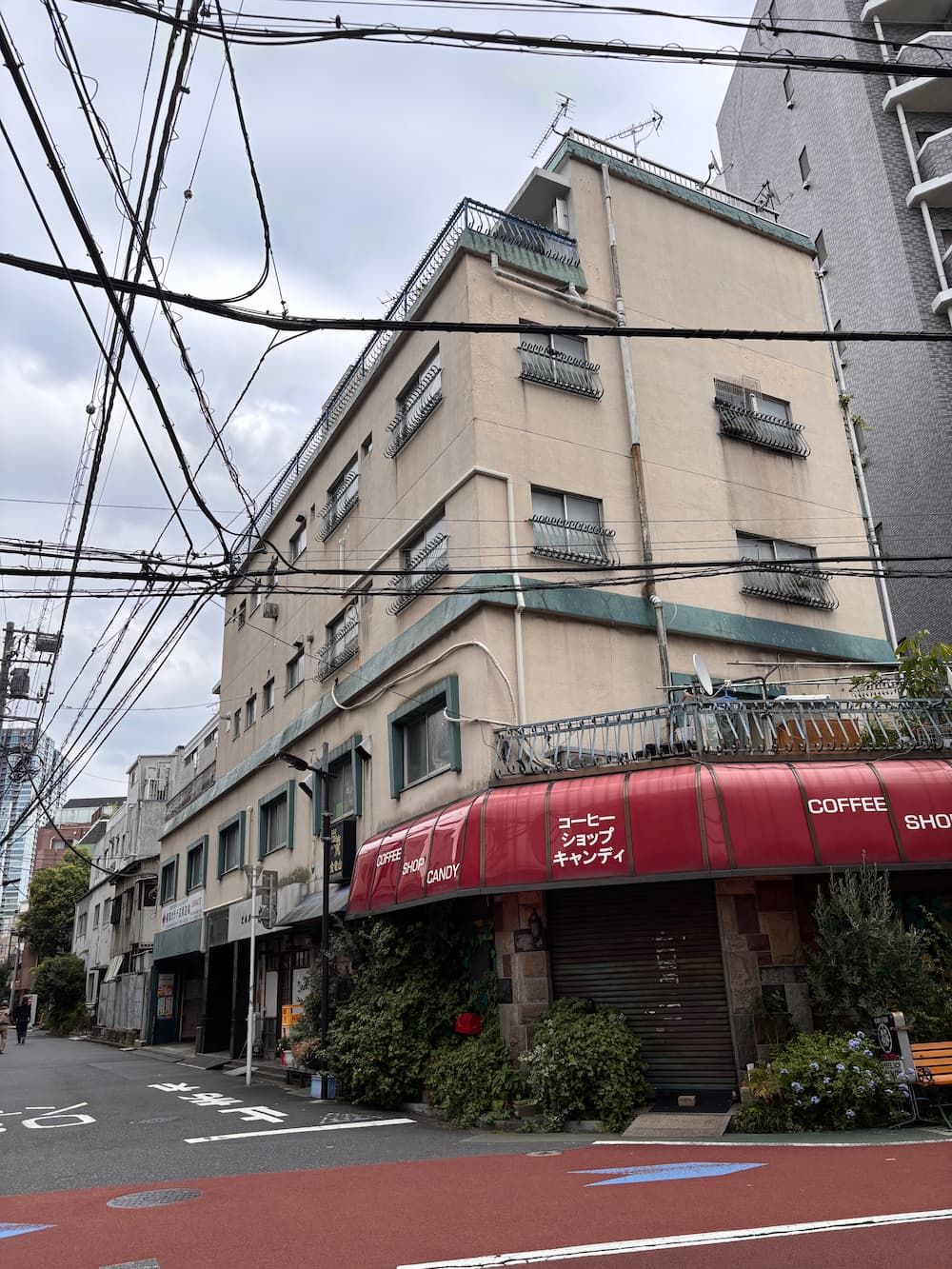
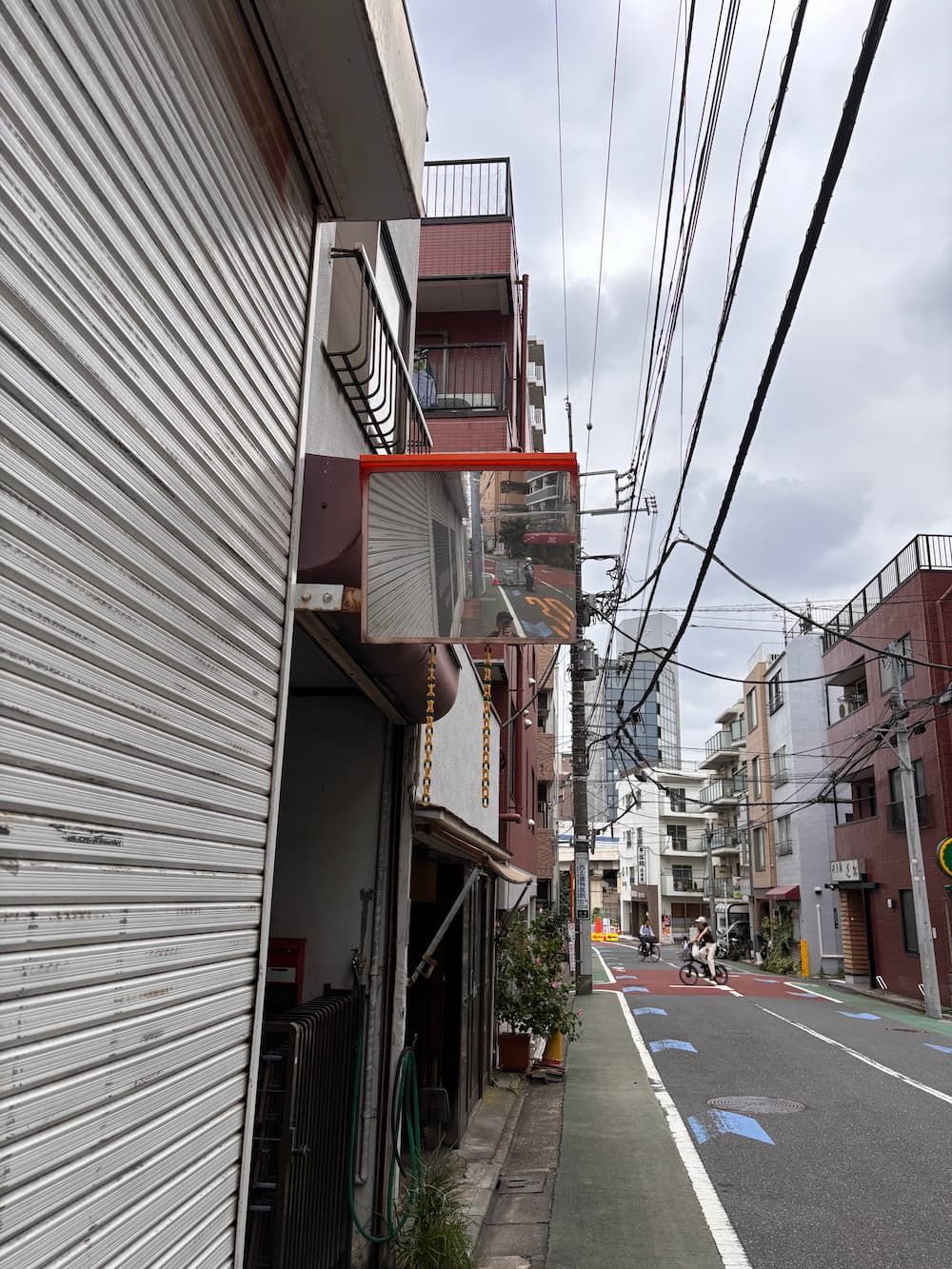
Soon, it reaches the point where it joins the Furukawa River.

The Gonobashi Bridge across the Furukawa River was being rebuilt. From here, I could clearly spot where the hidden waterway pours into the river.
Before heading back, I walked a little further to where some old shops still stand.
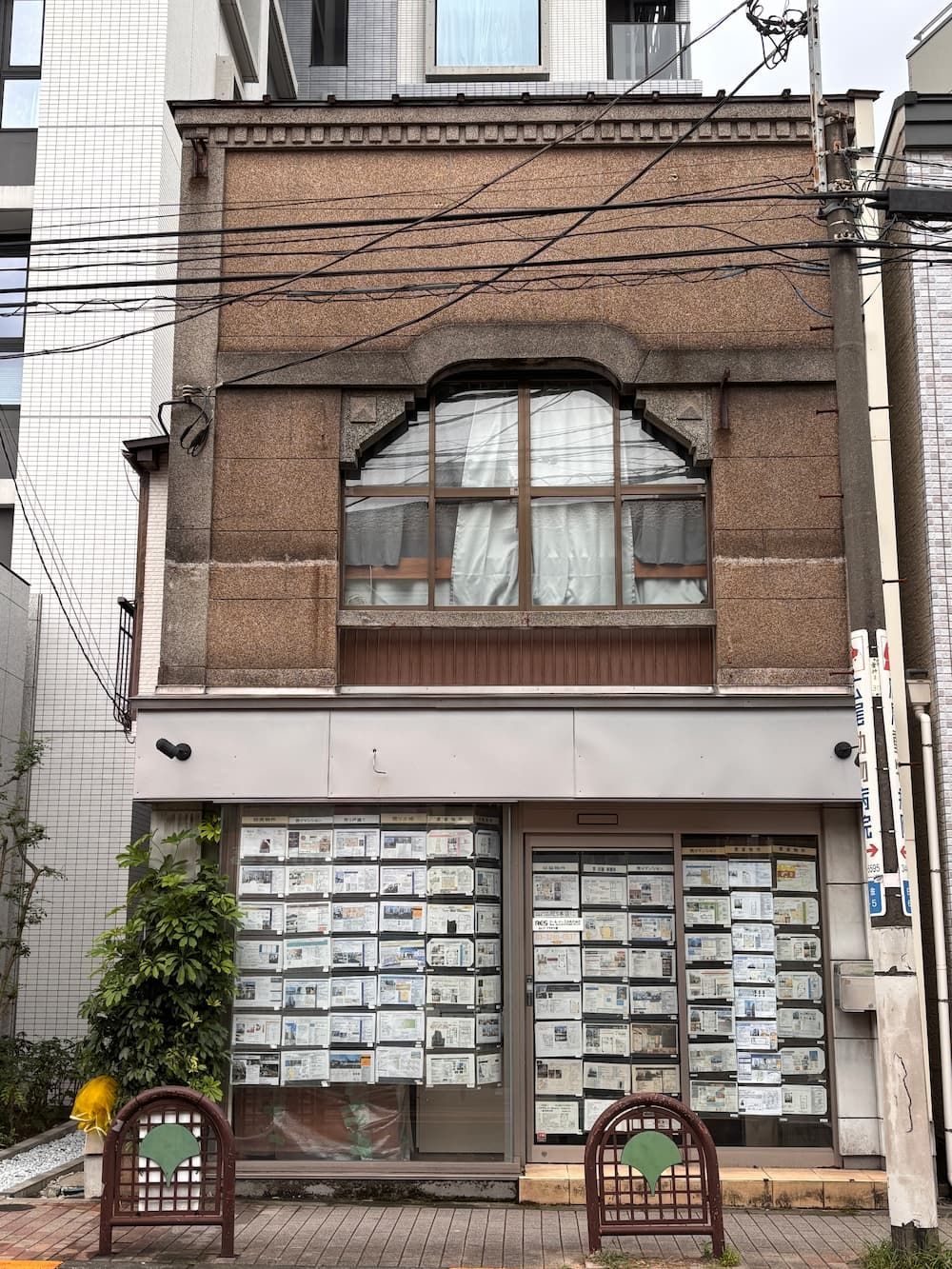
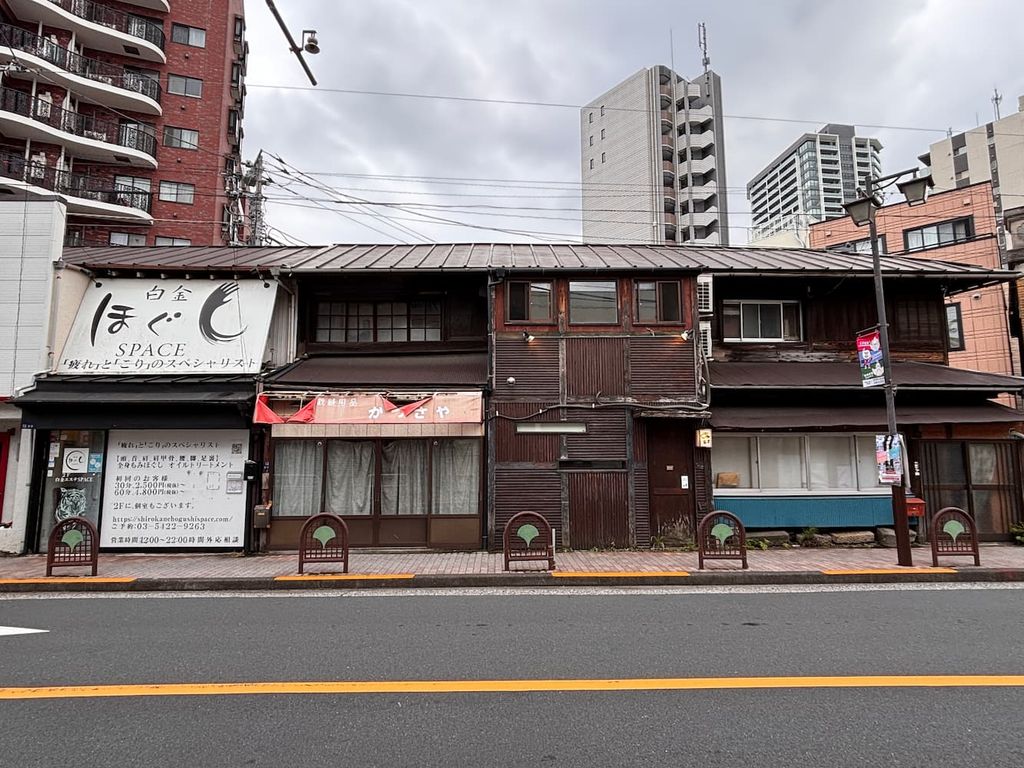
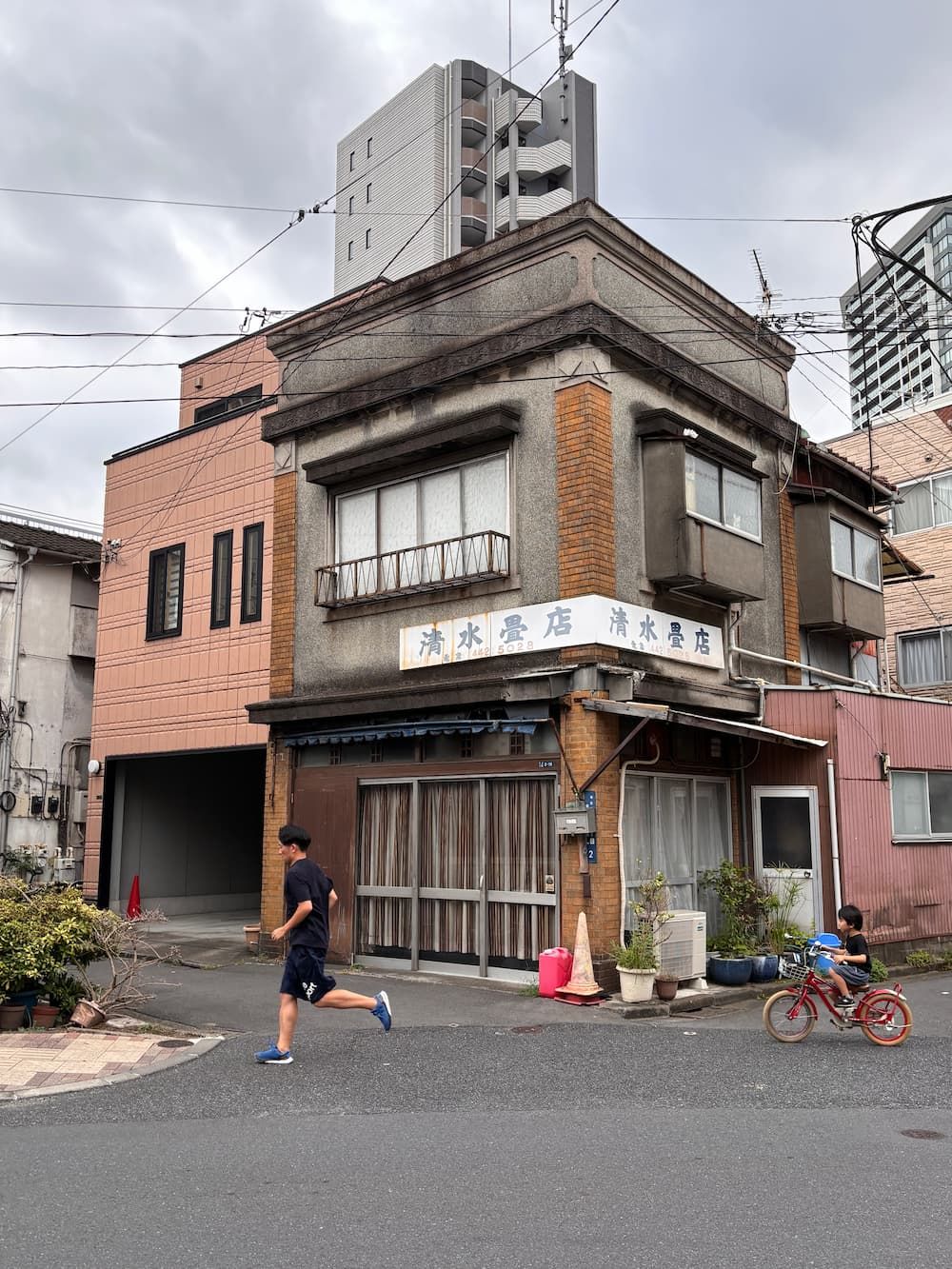
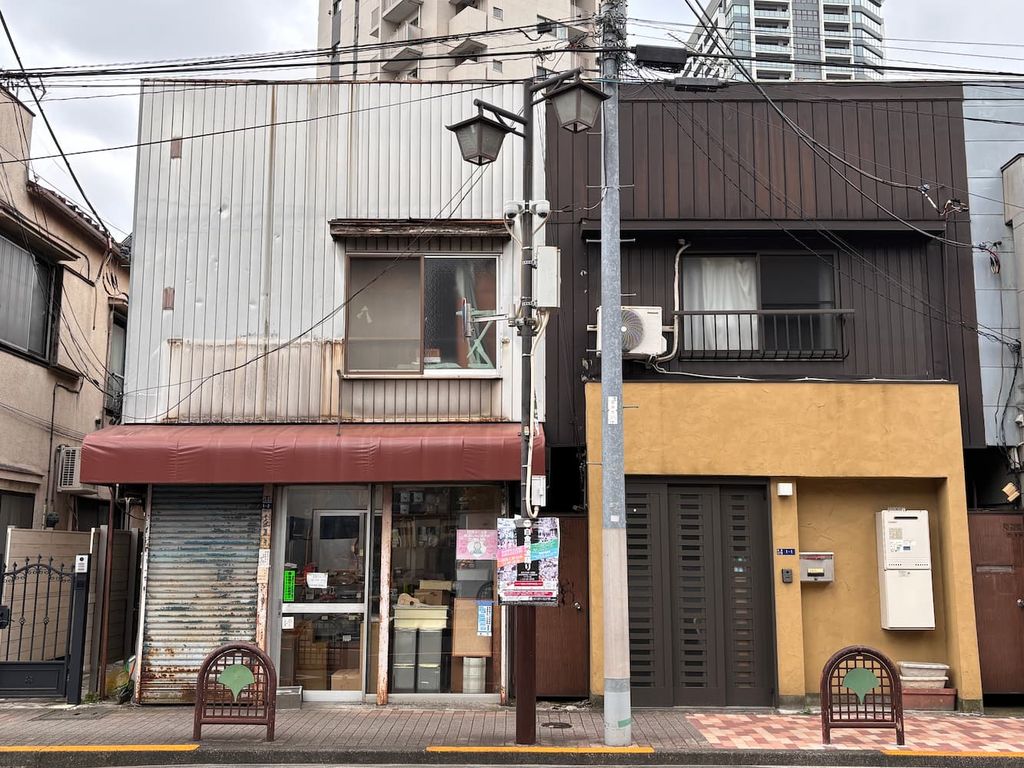

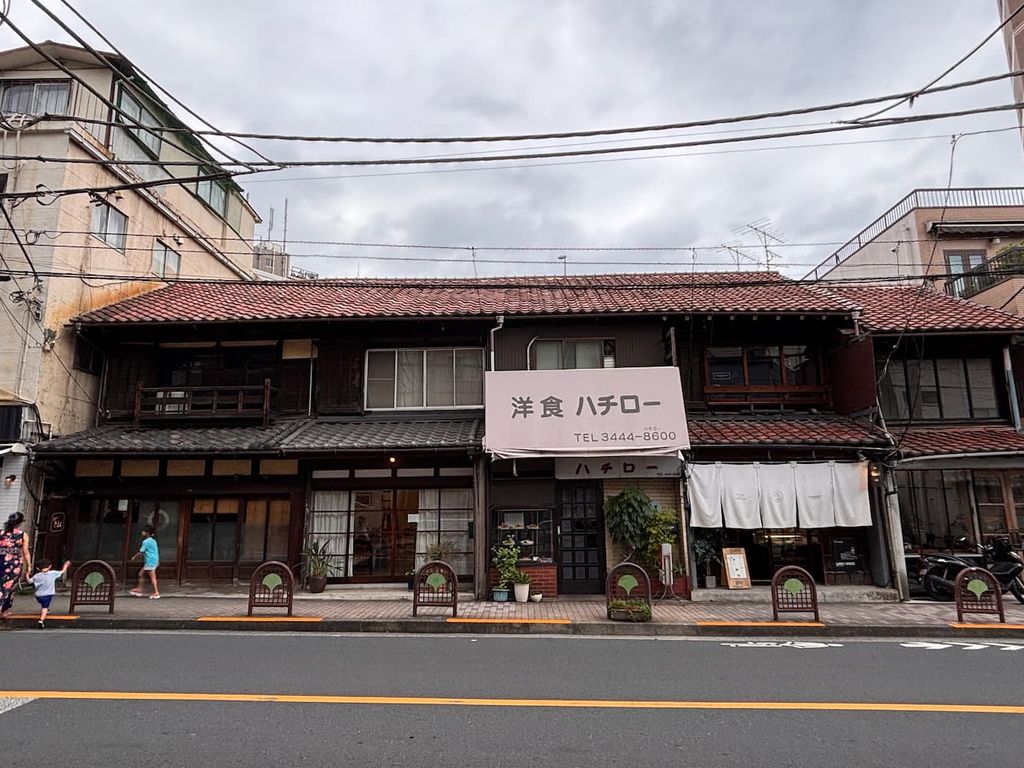
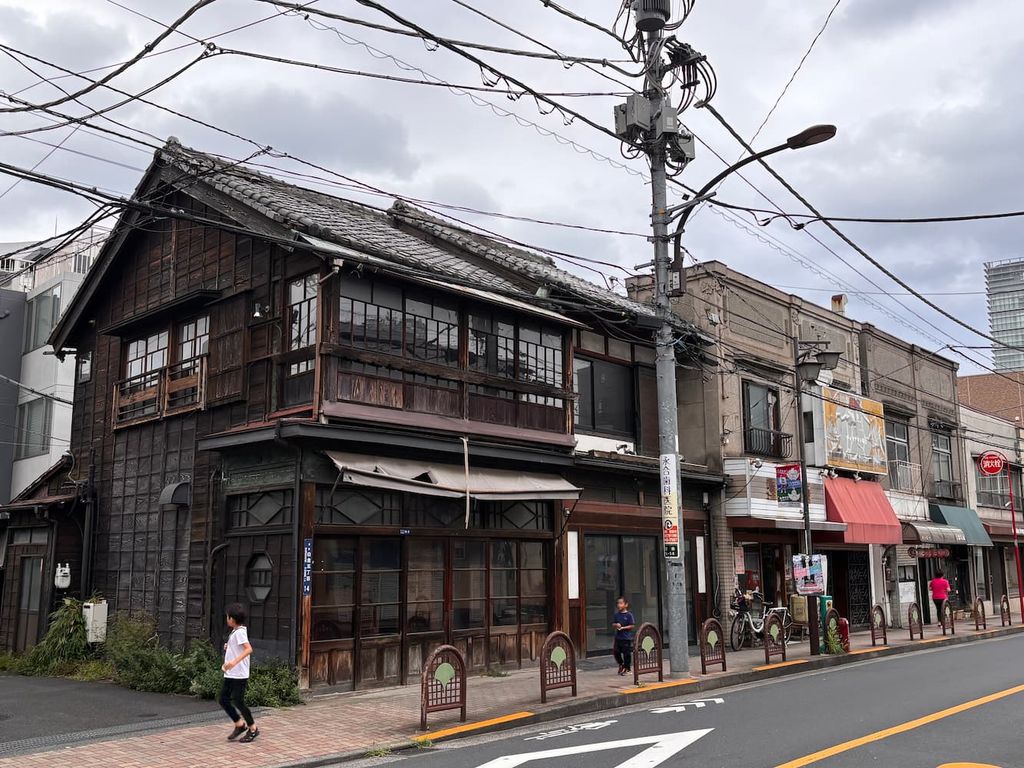
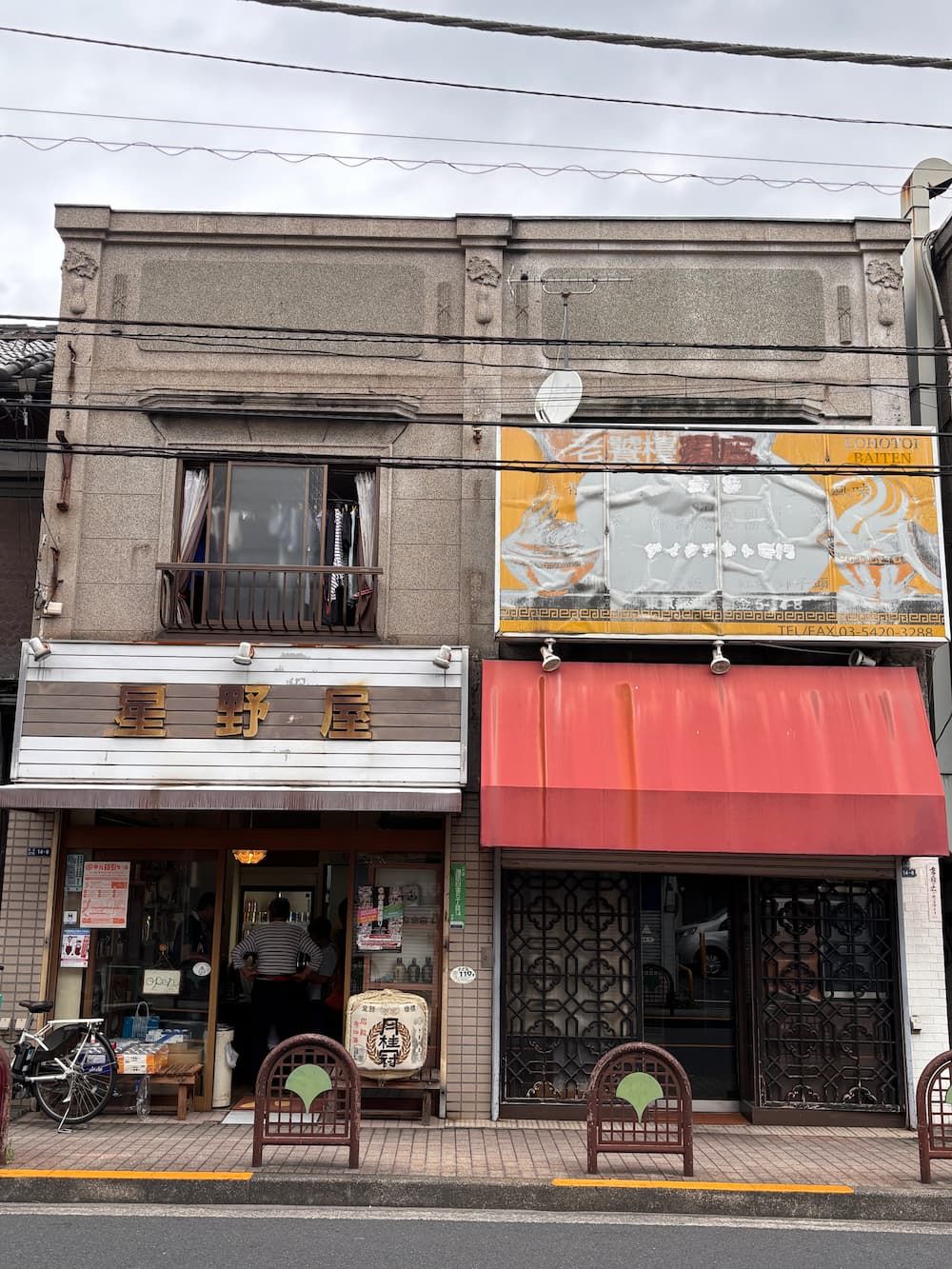
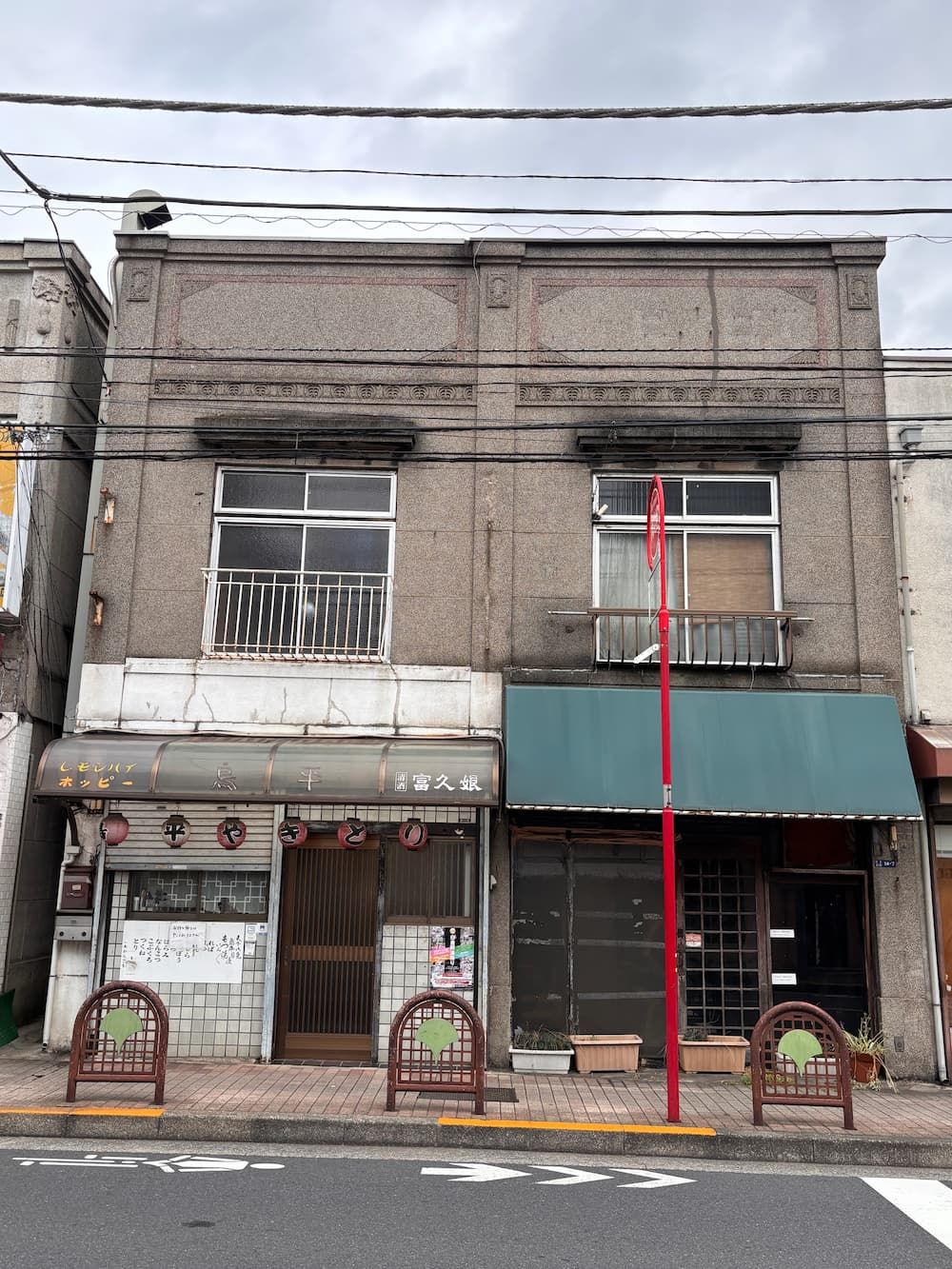
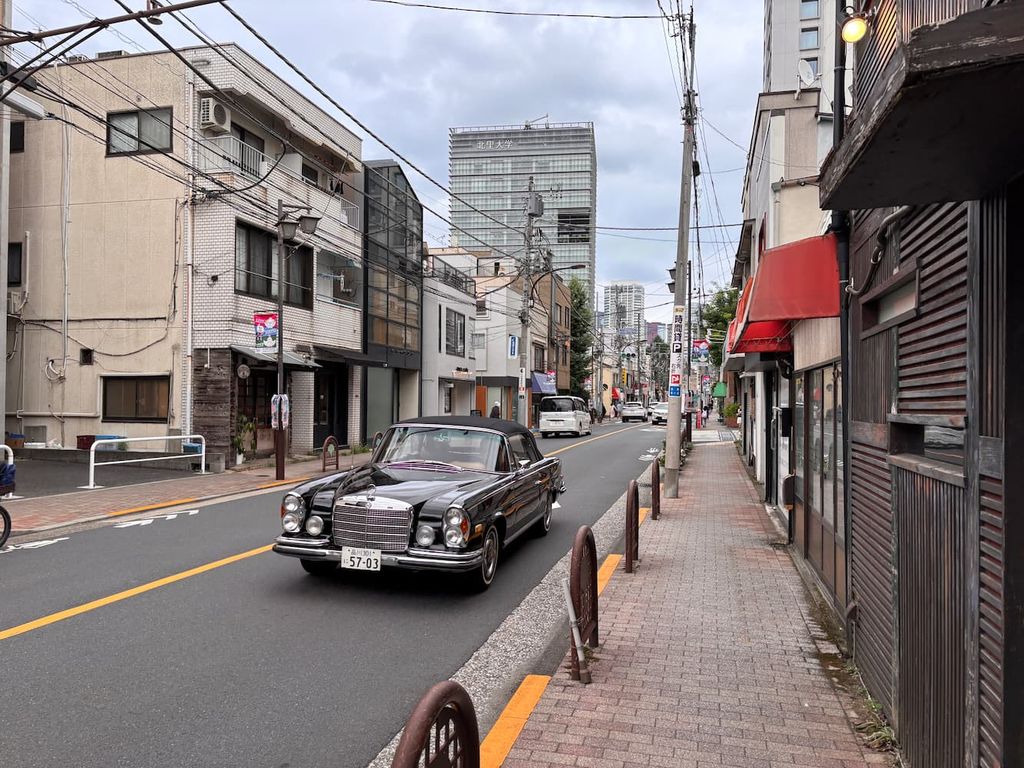
I’m not really interested in cars, but when a stately, classic Mercedes passed by, I couldn’t resist taking a photo.
It would have been perfect to catch the scene with the old shops in the background, but I missed the chance.
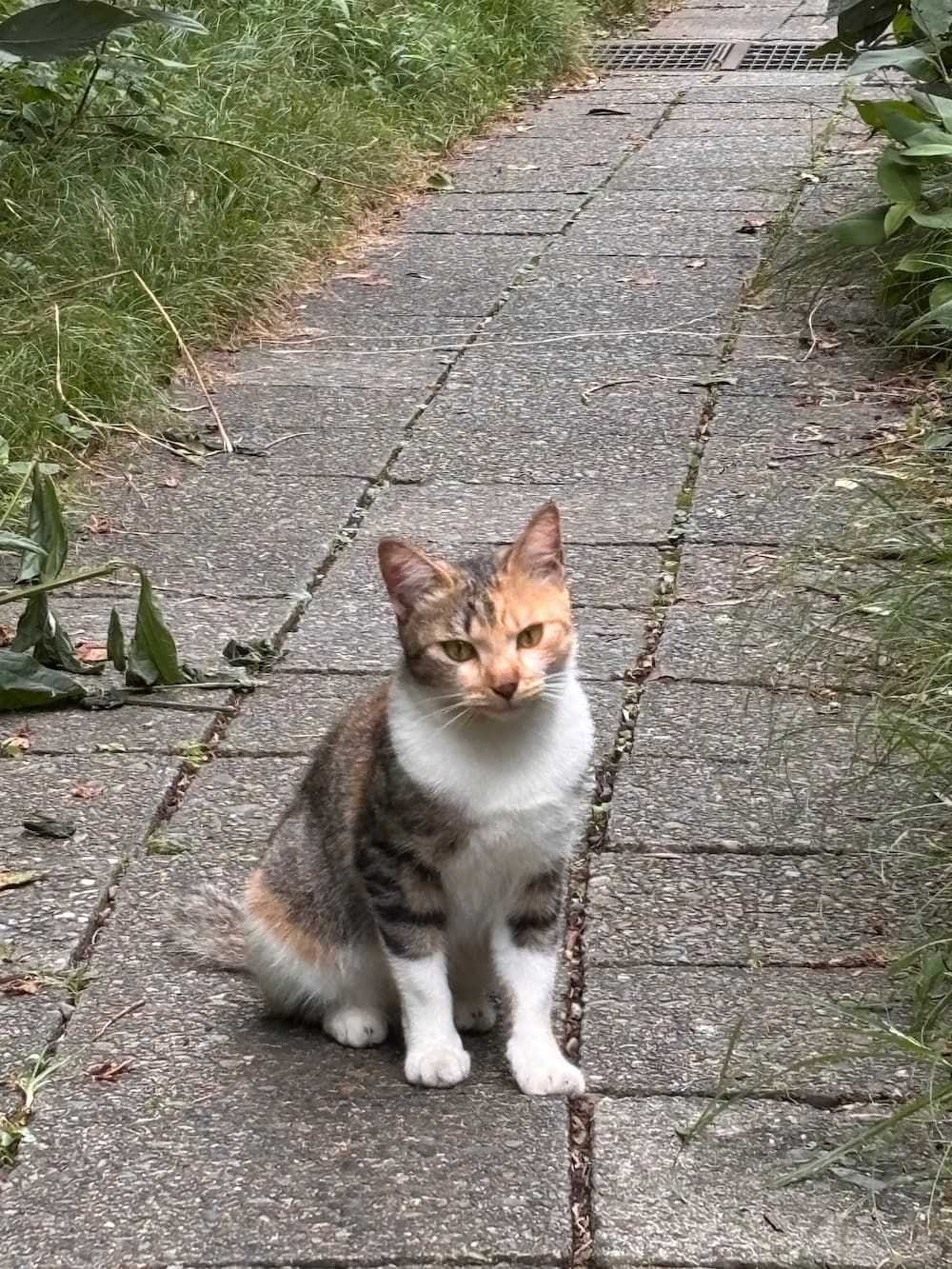
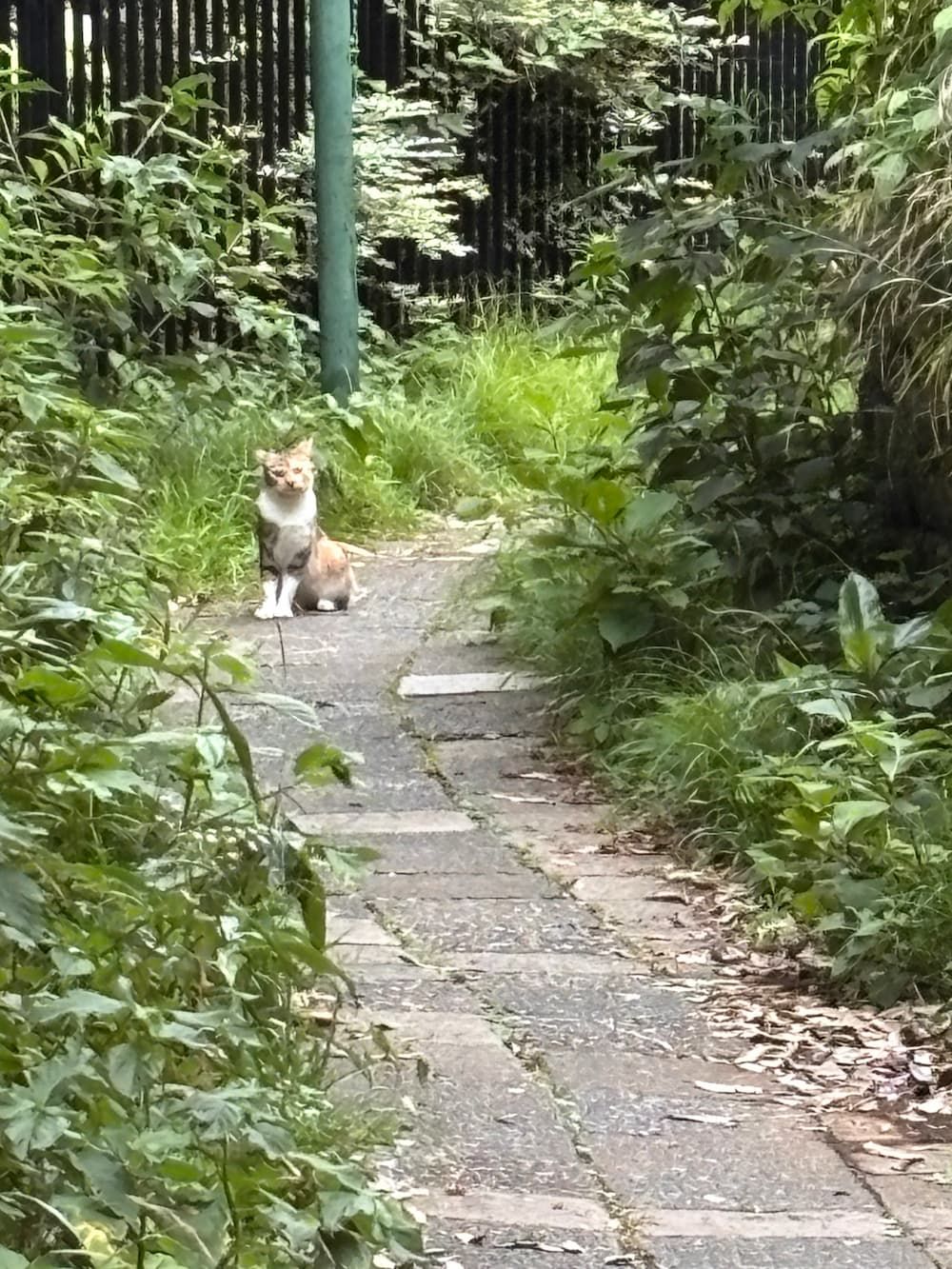
When I returned to the path of the hidden waterway, a cat was walking just ahead. I called out, and it paused before coming closer.
I stroked its fur for a moment, and when I finally said goodbye, it lingered there, watching me go as if seeing me off.